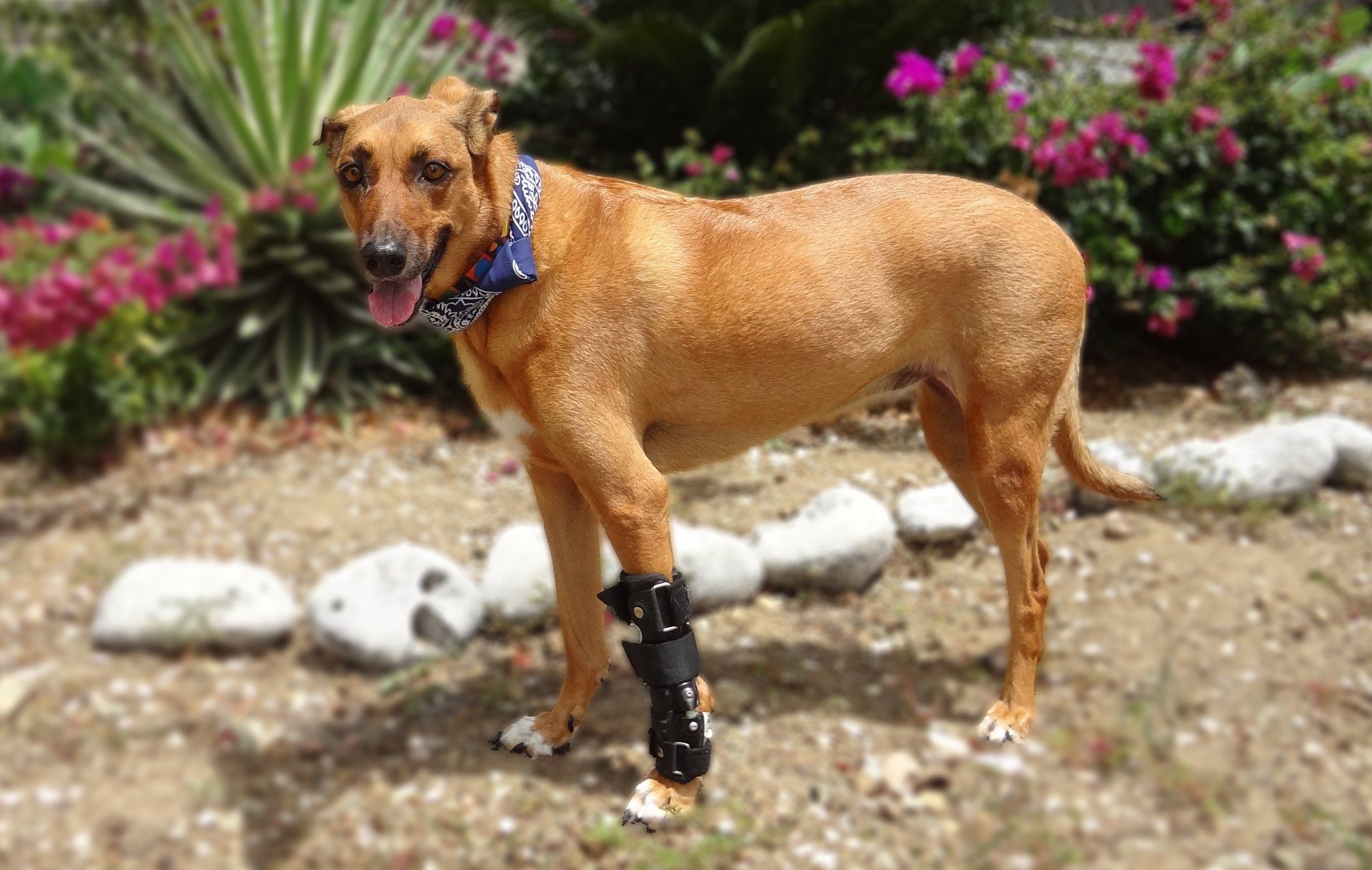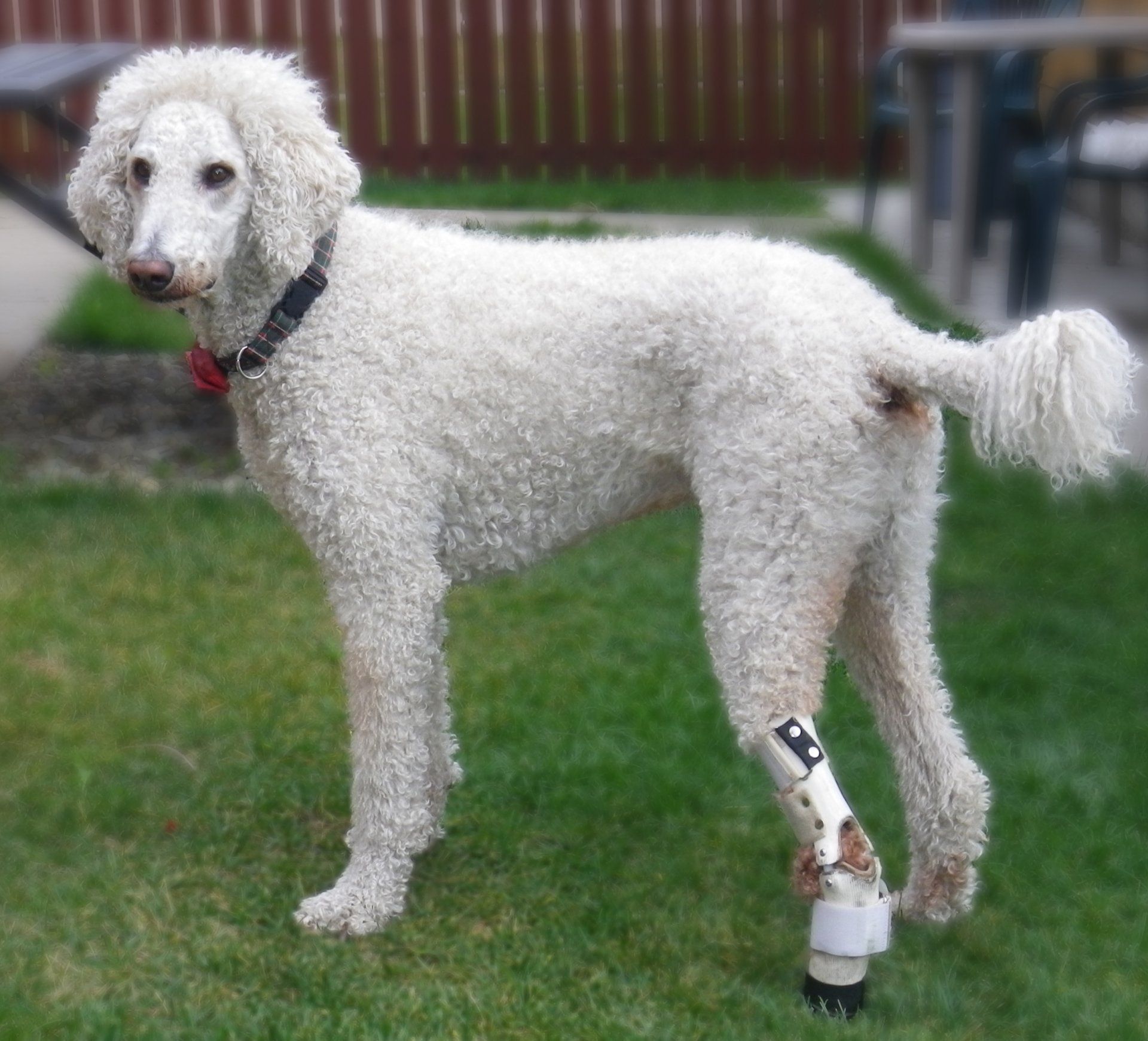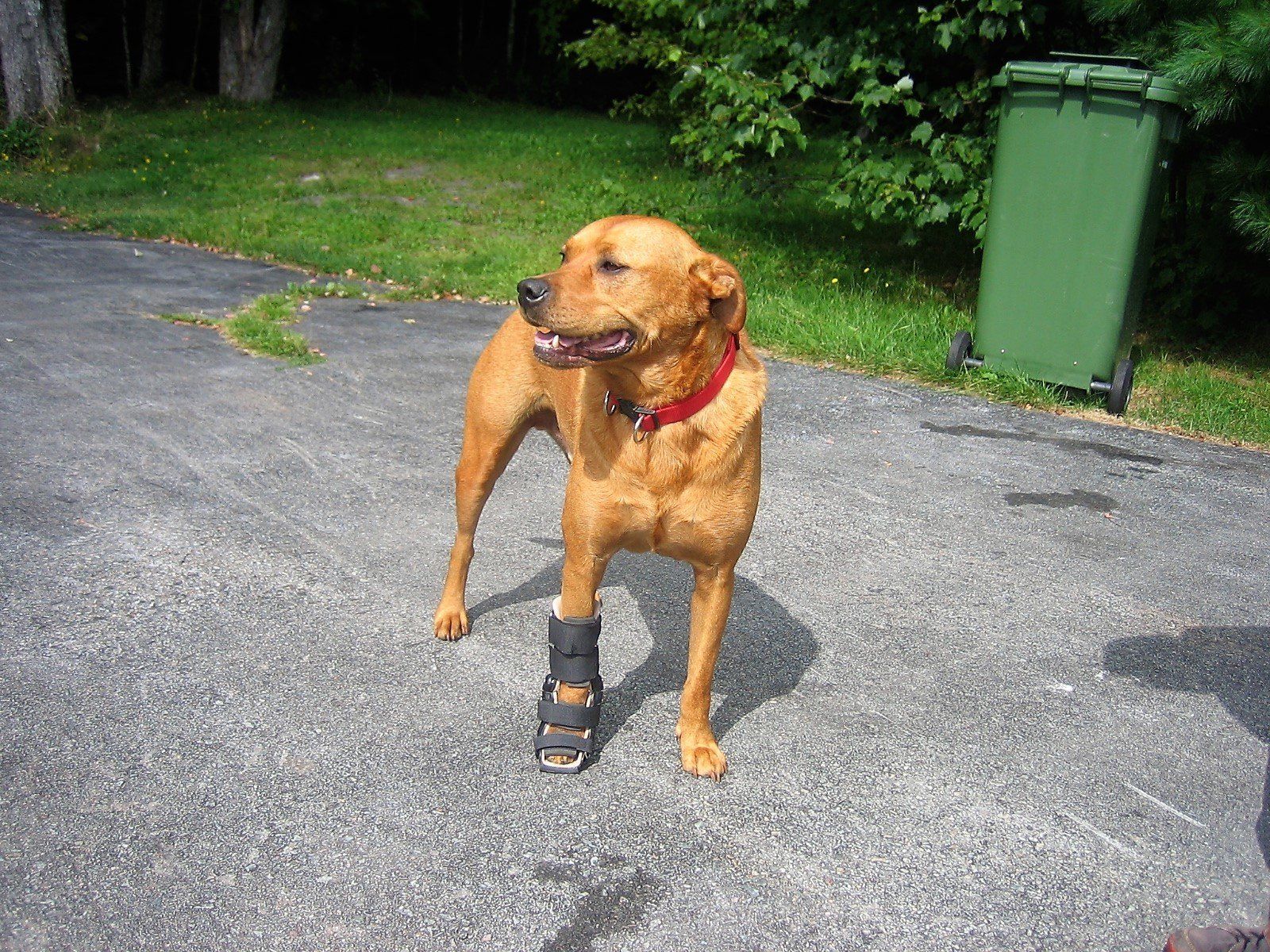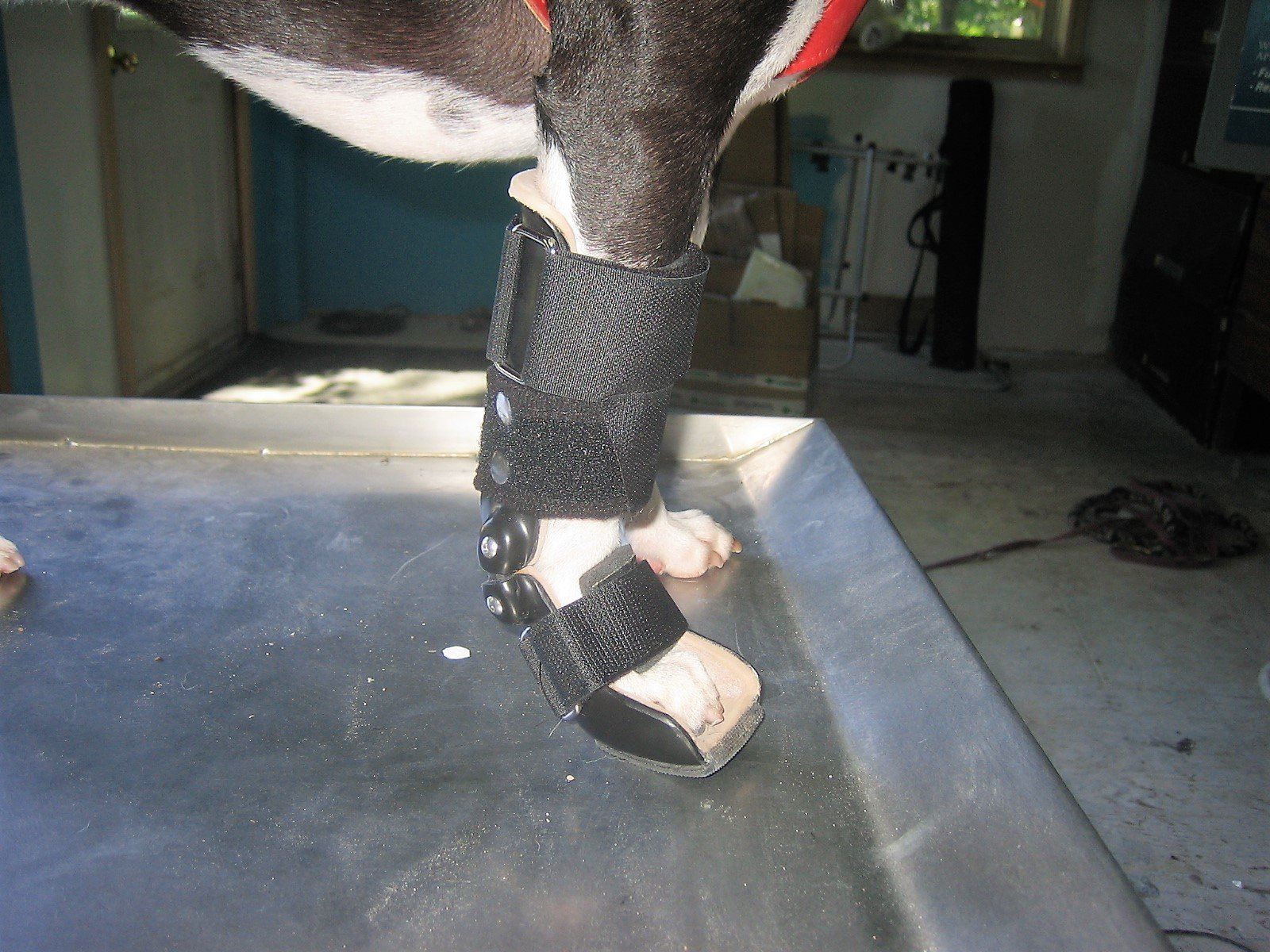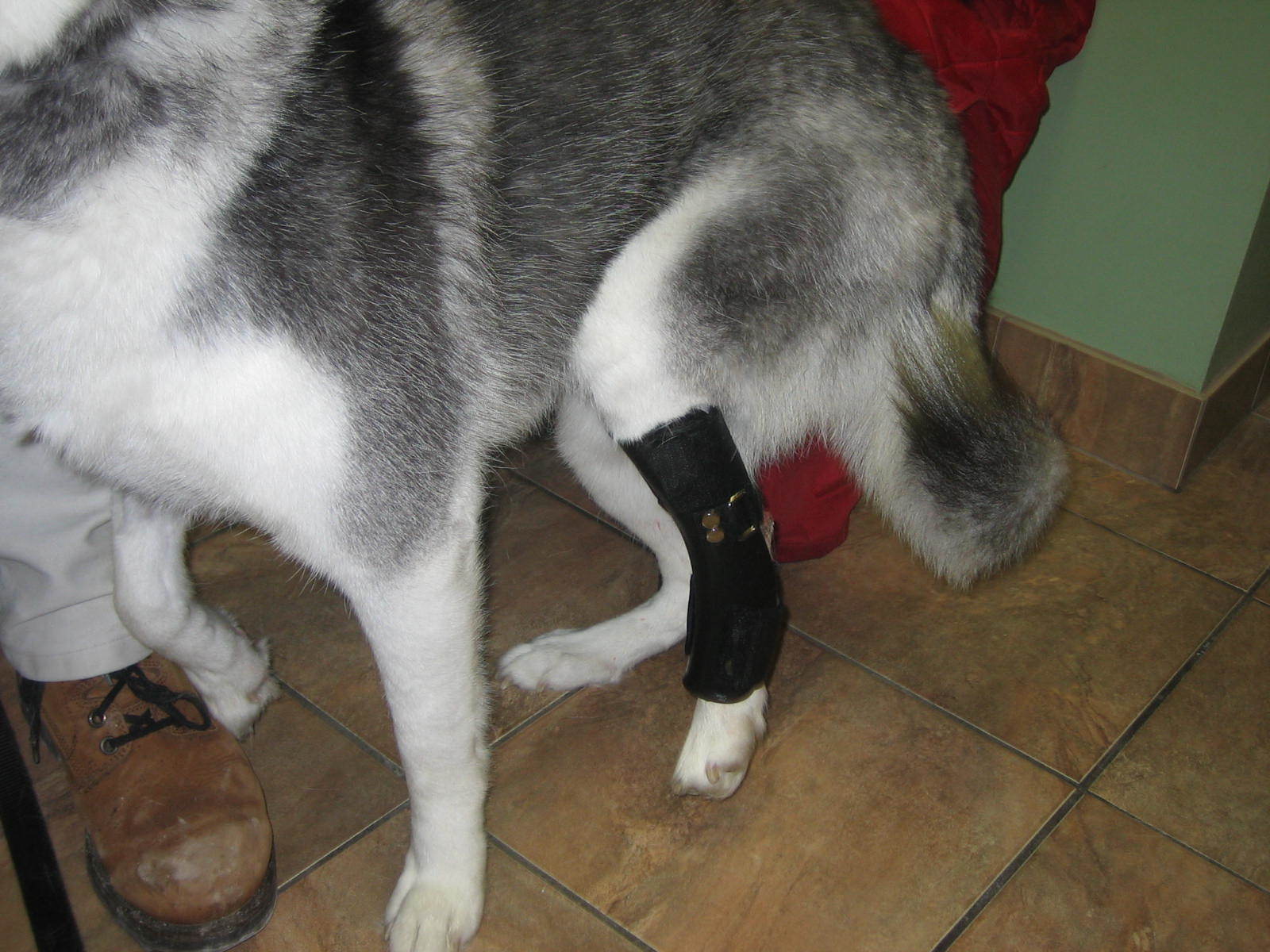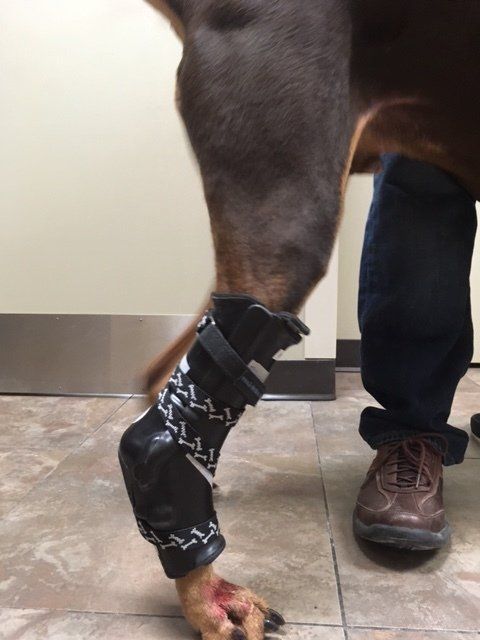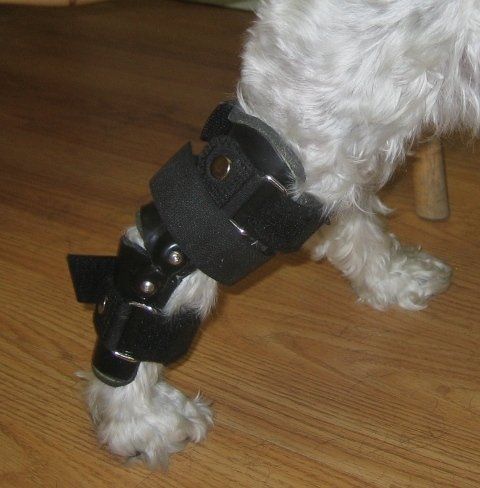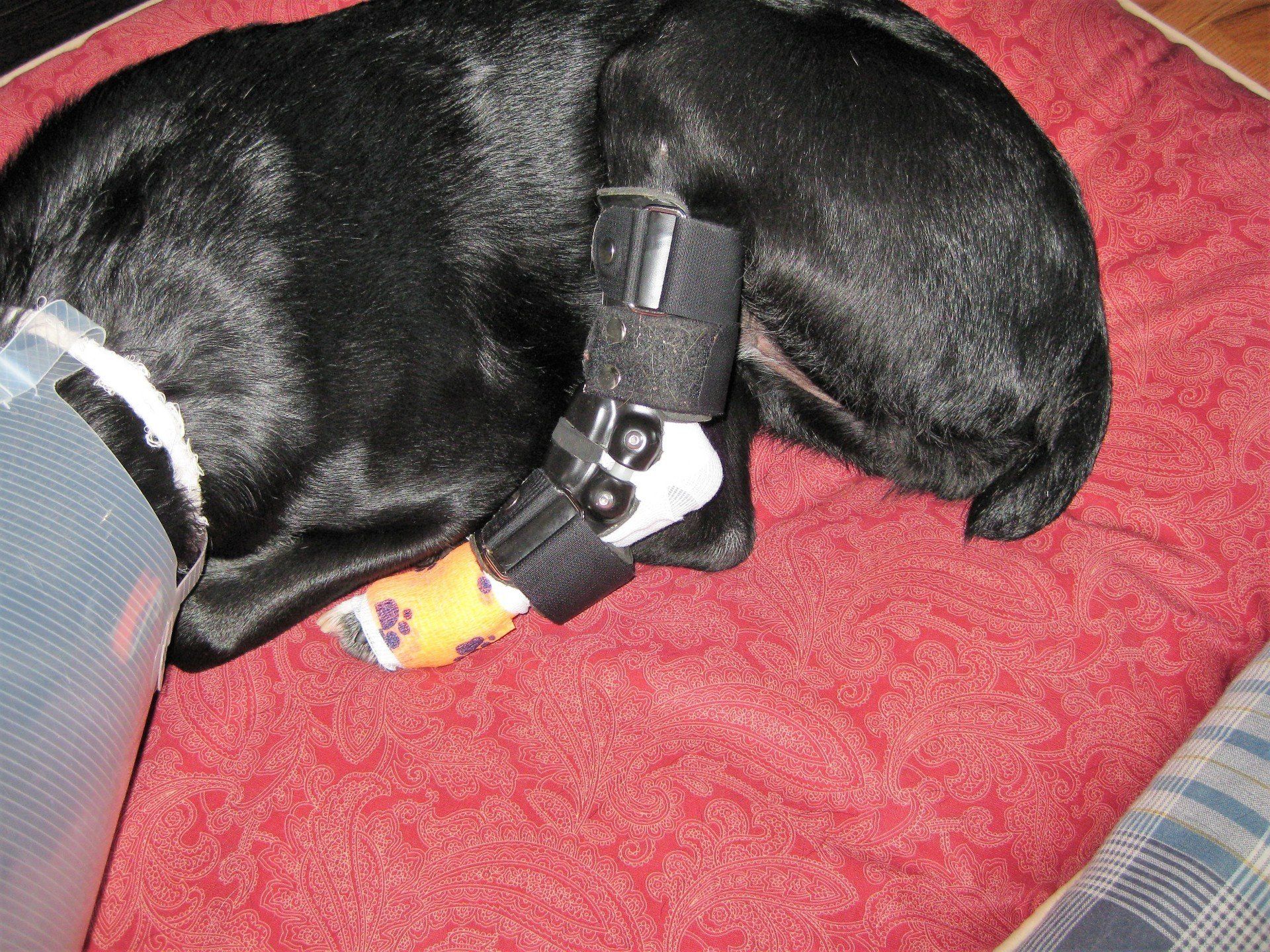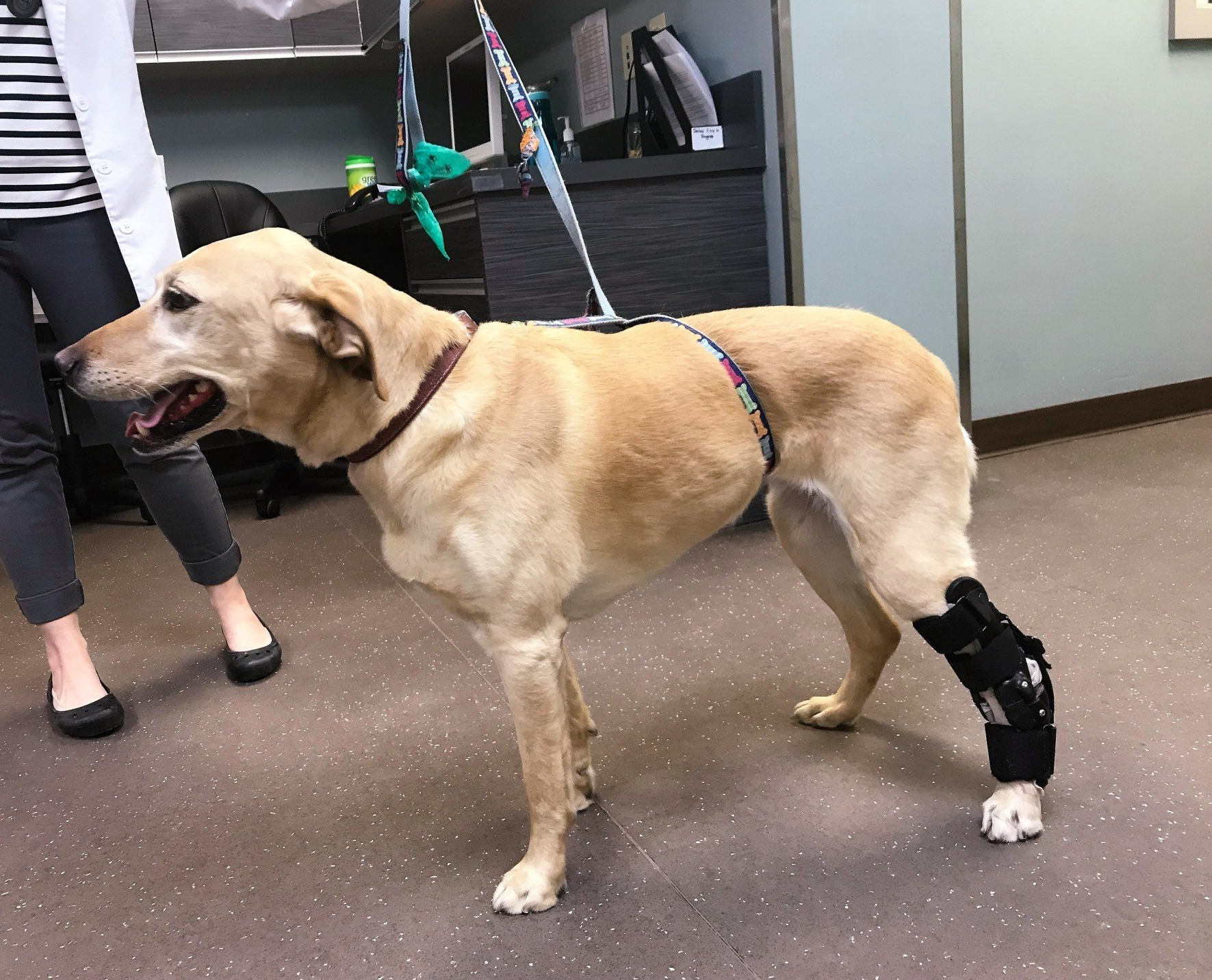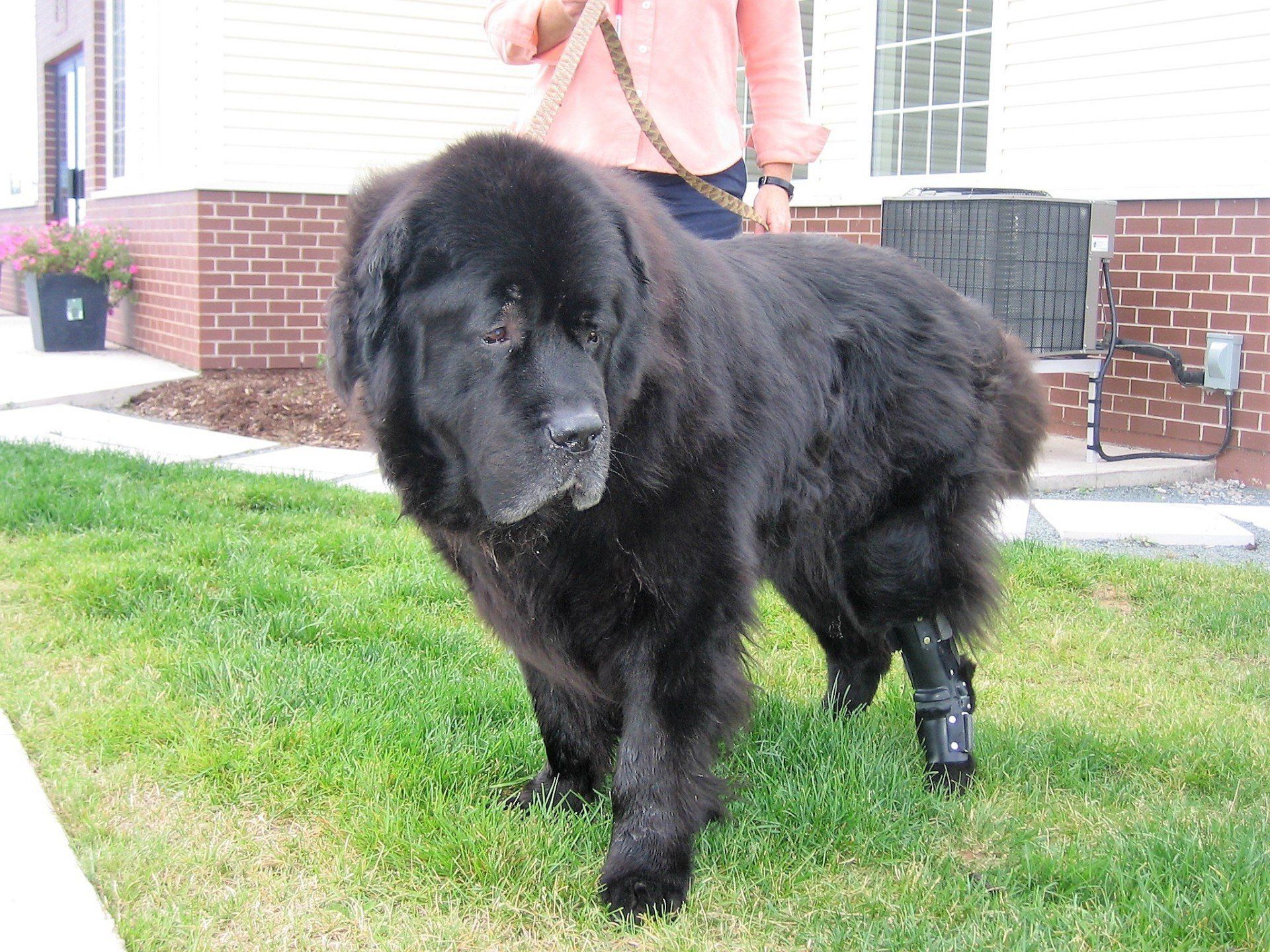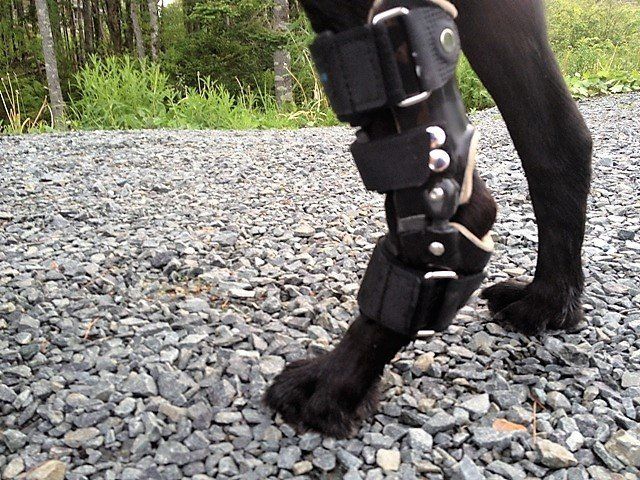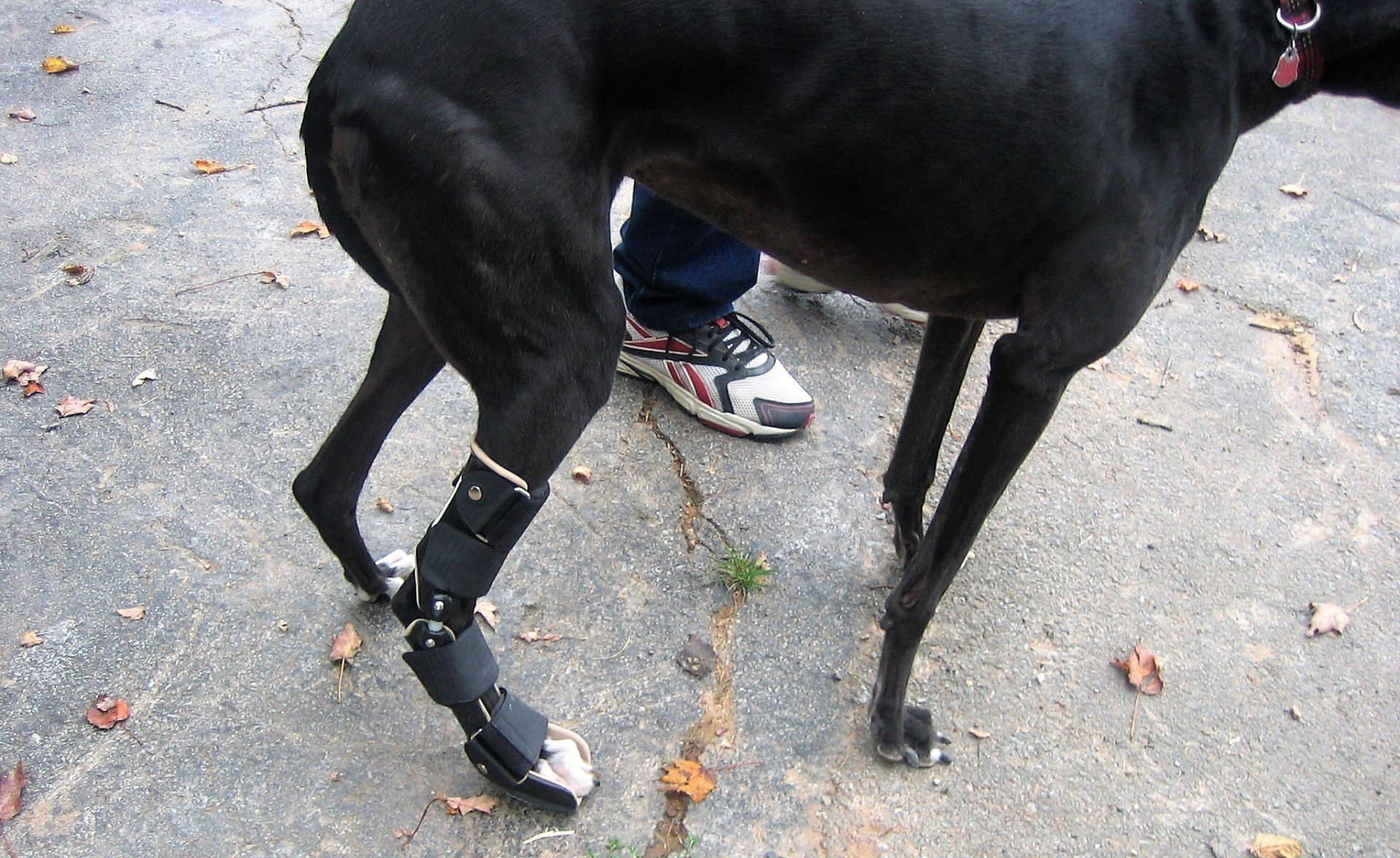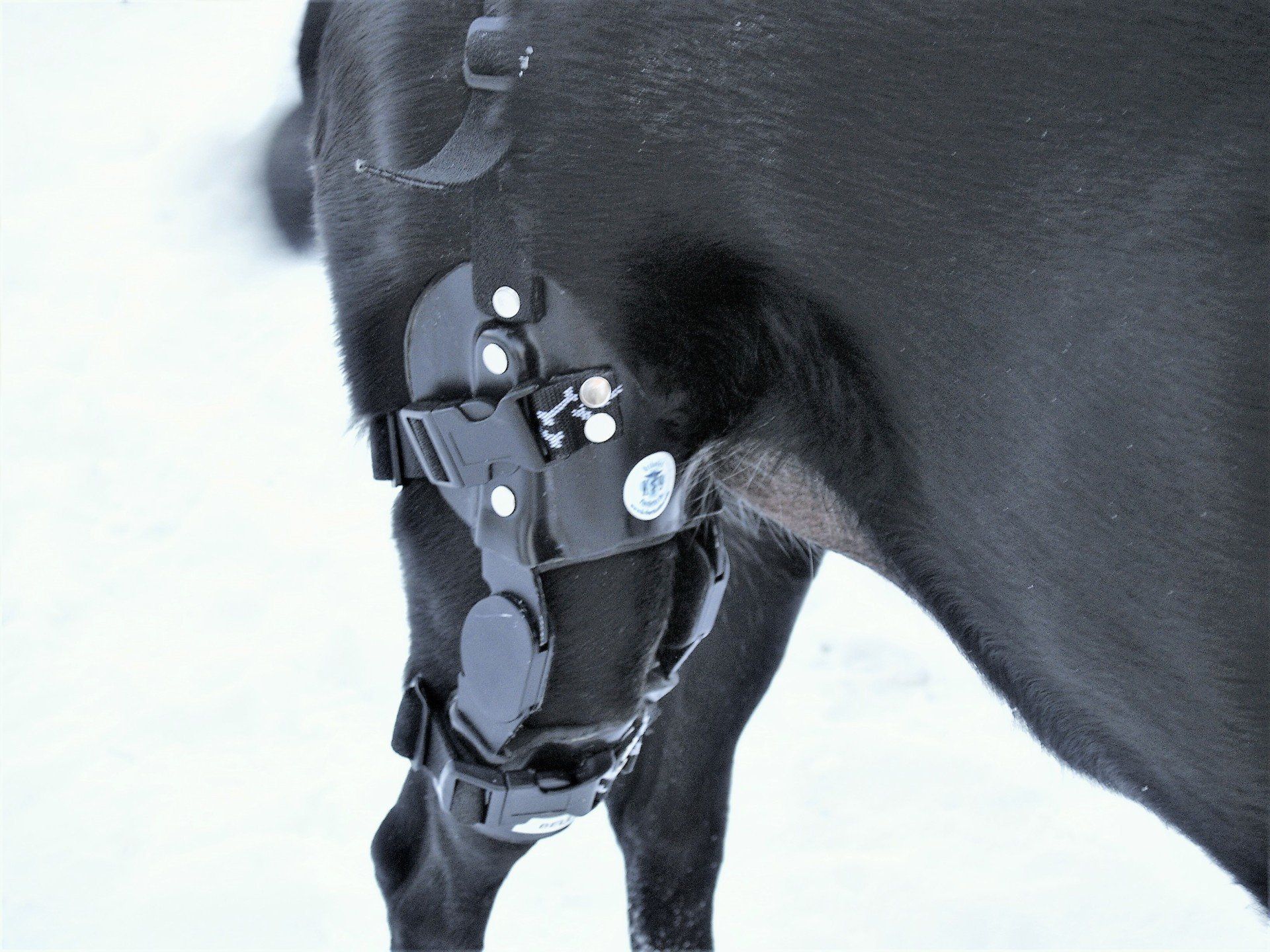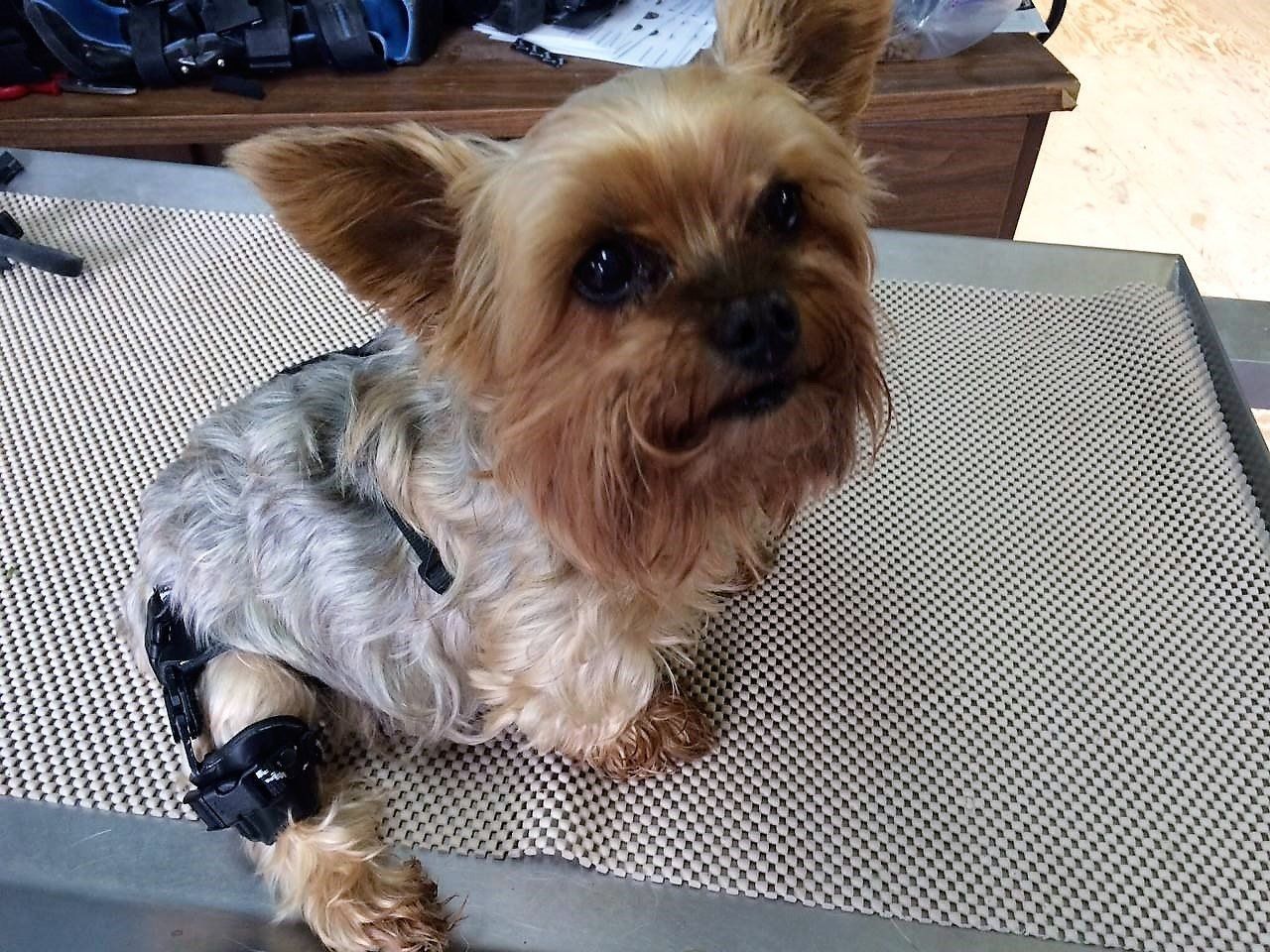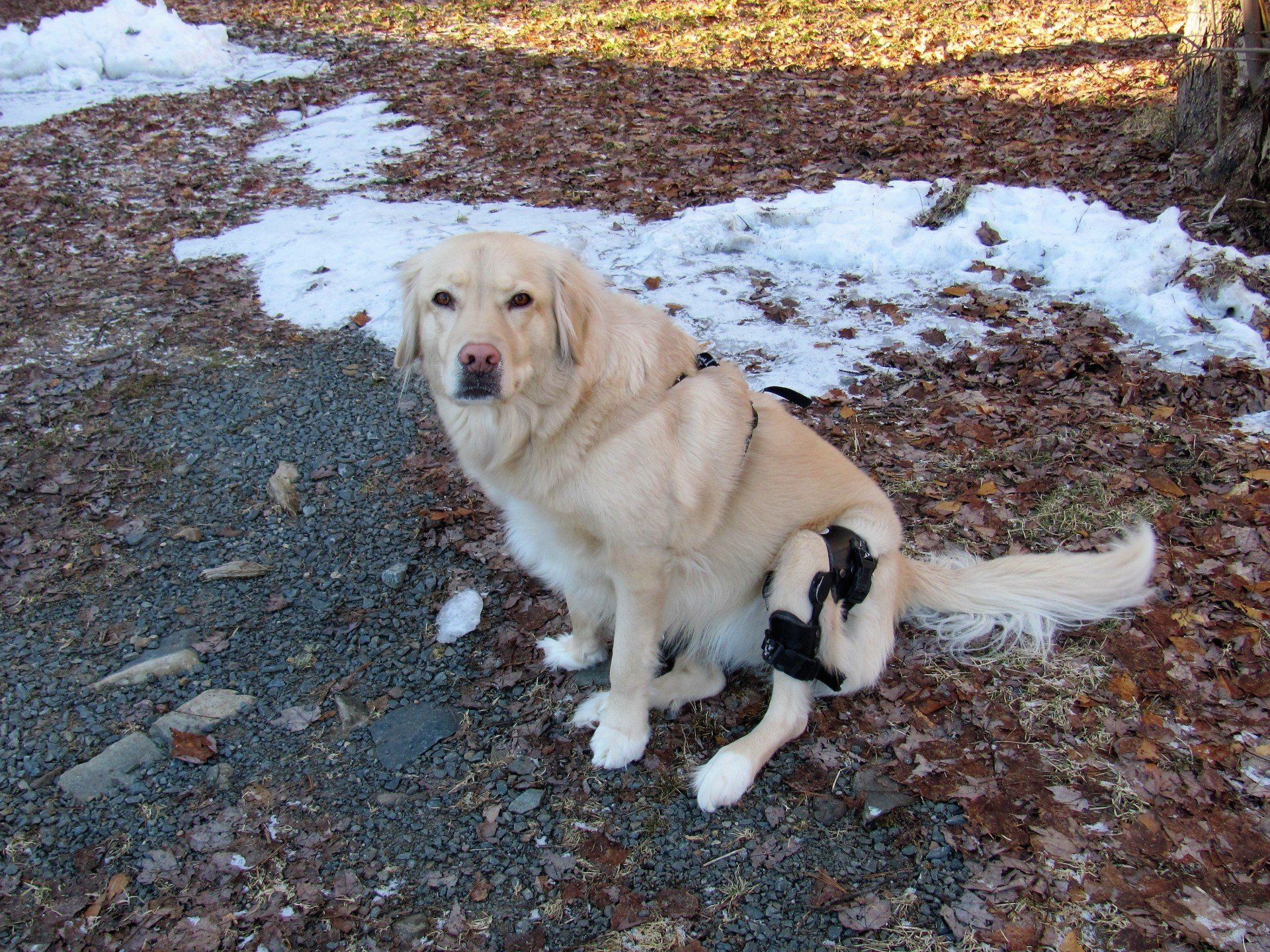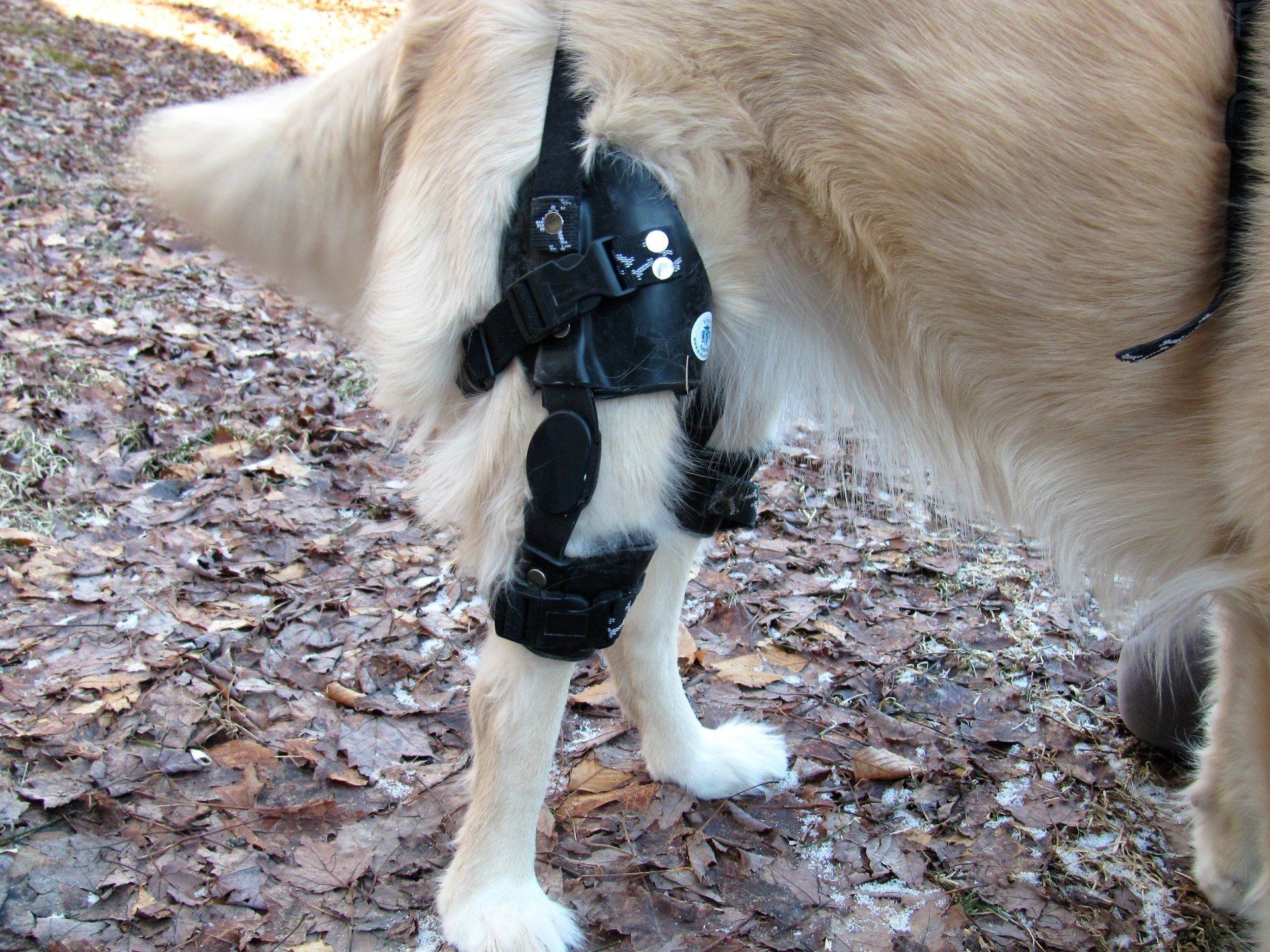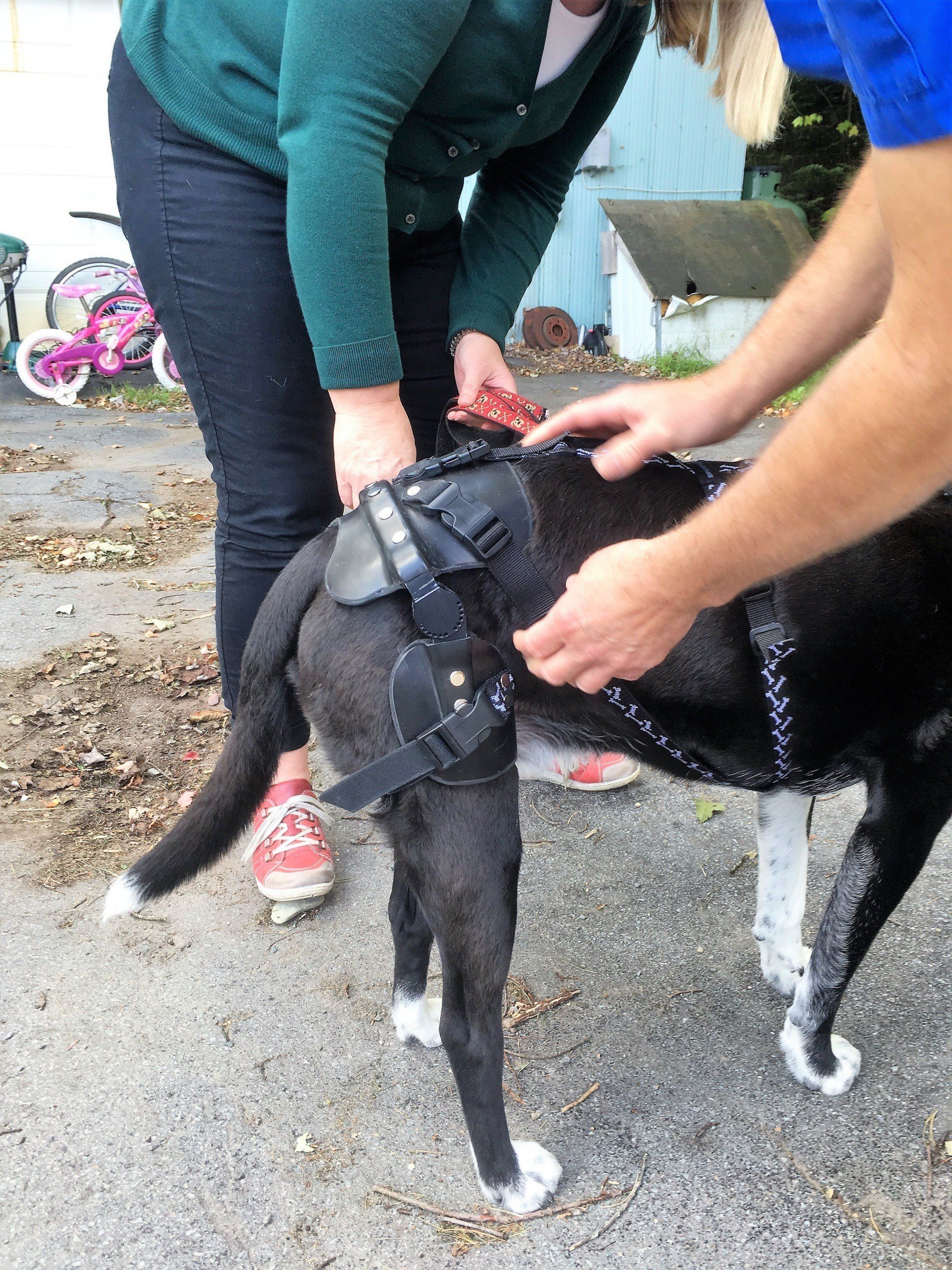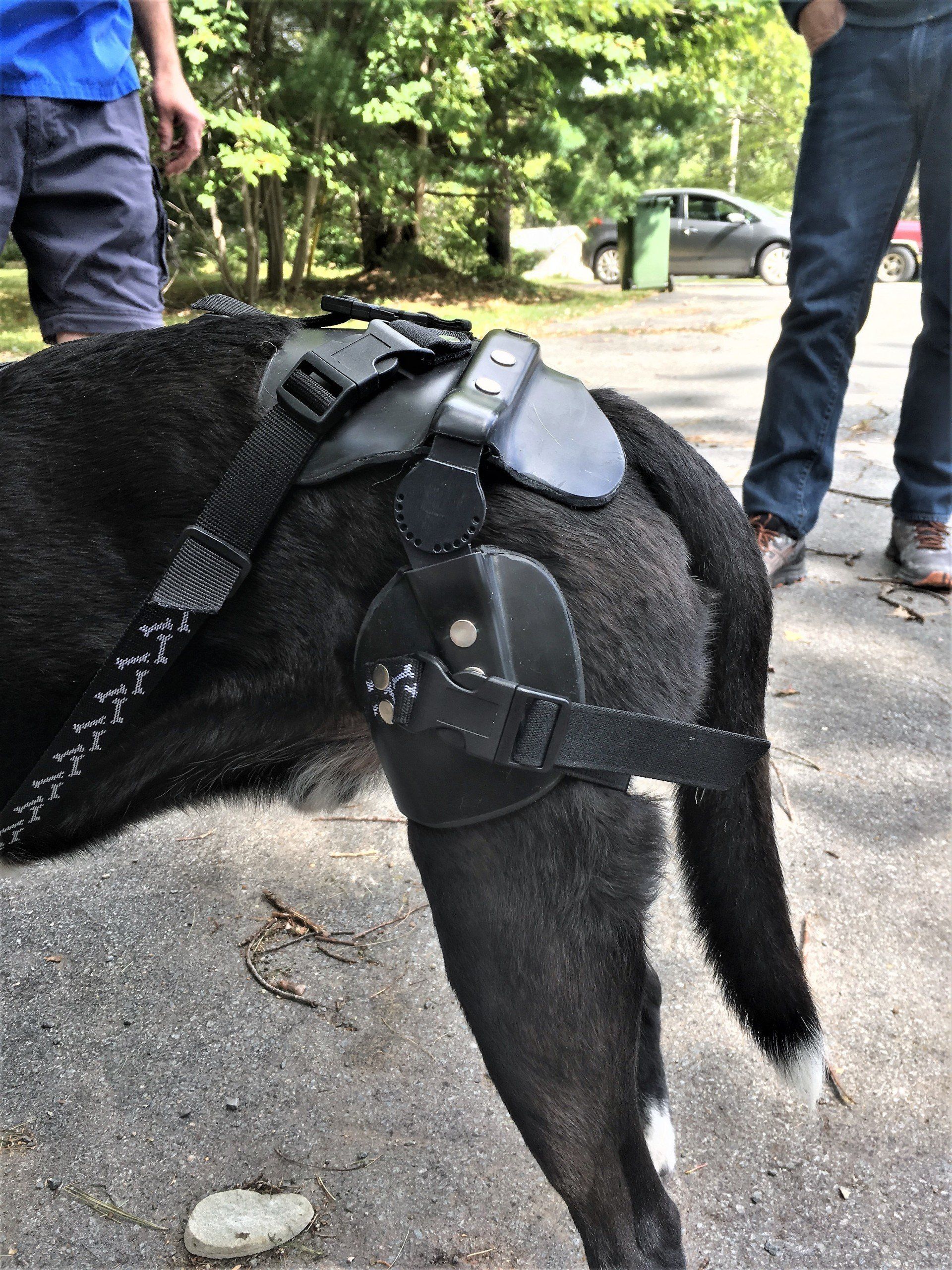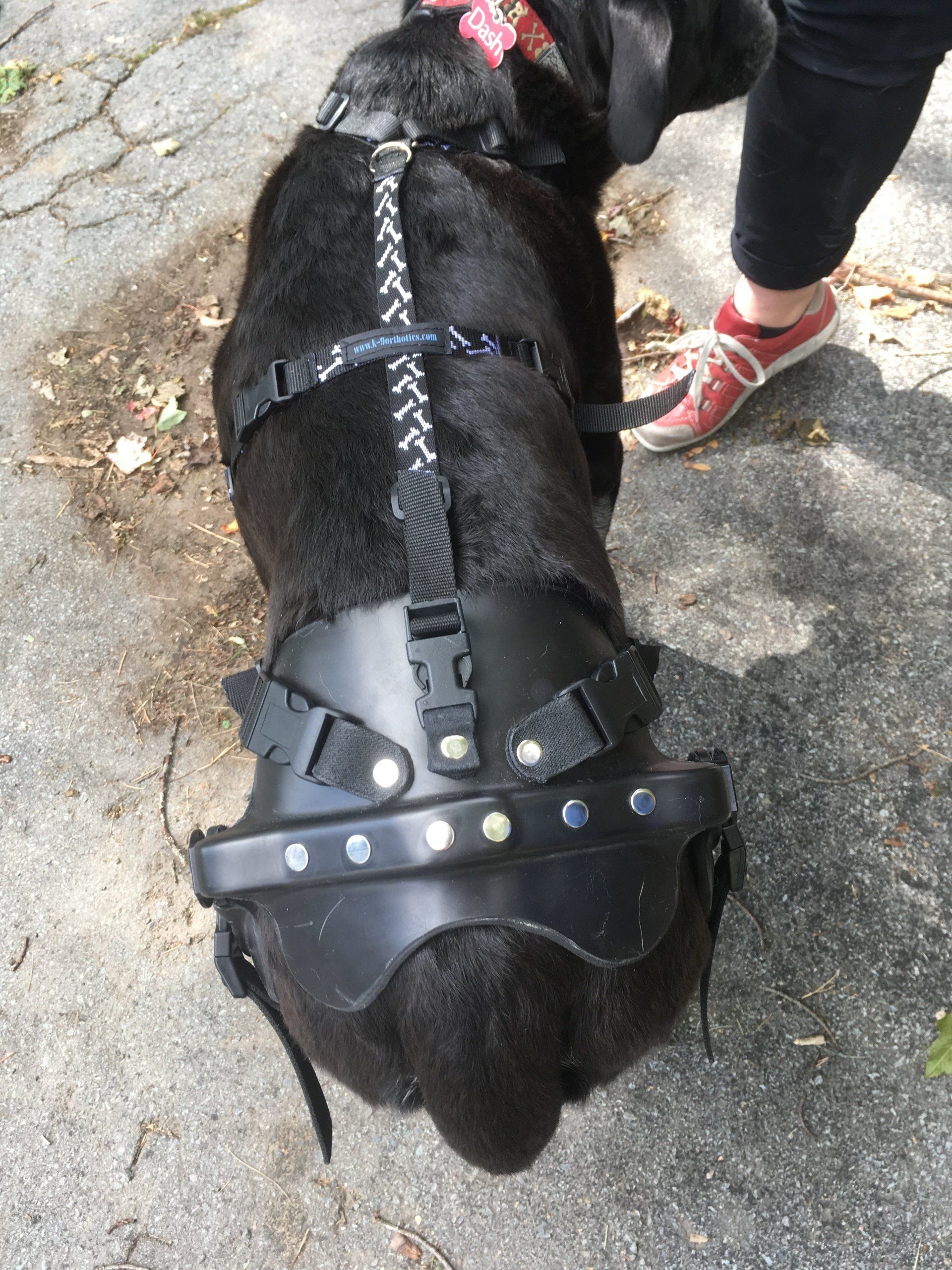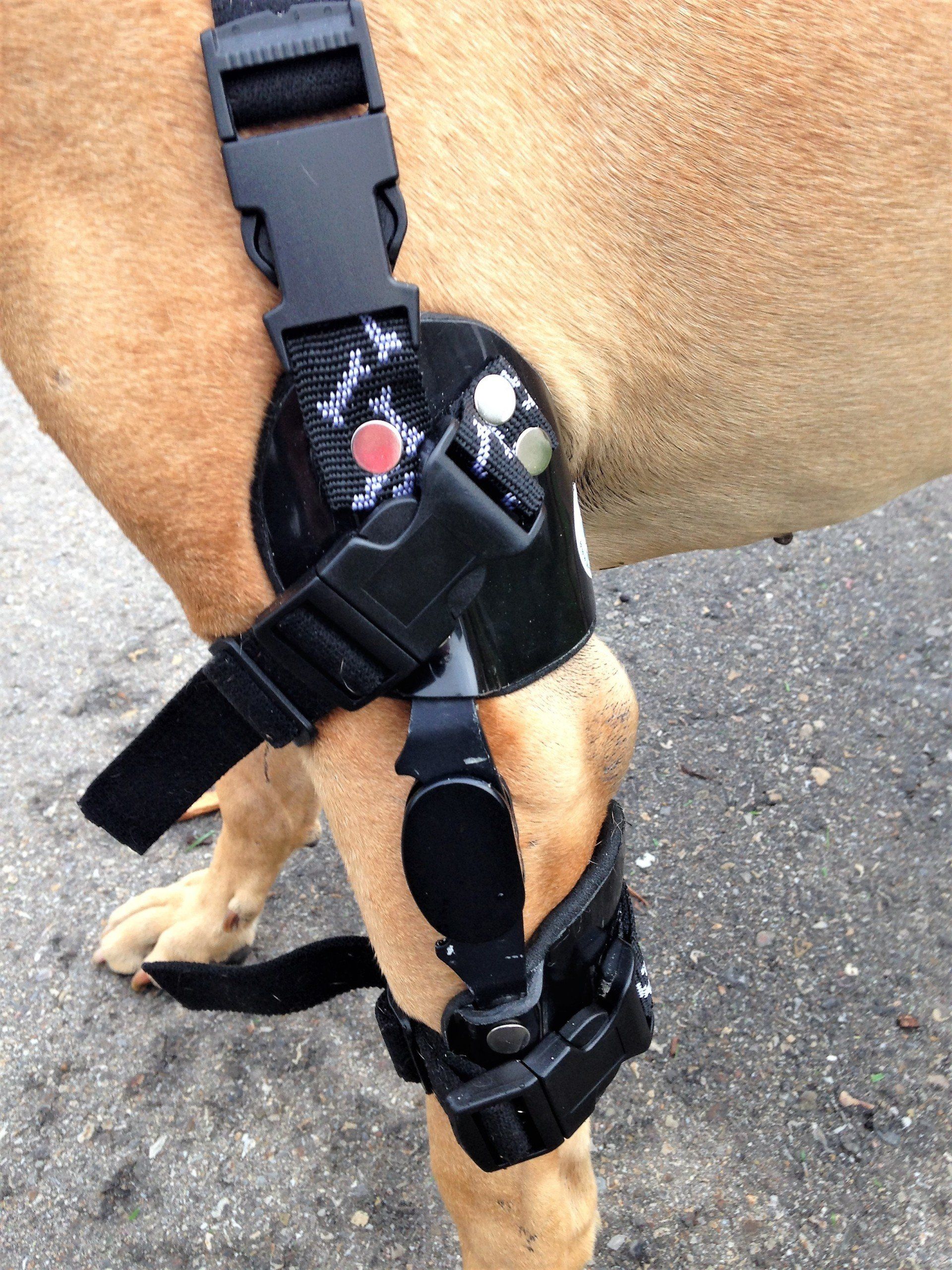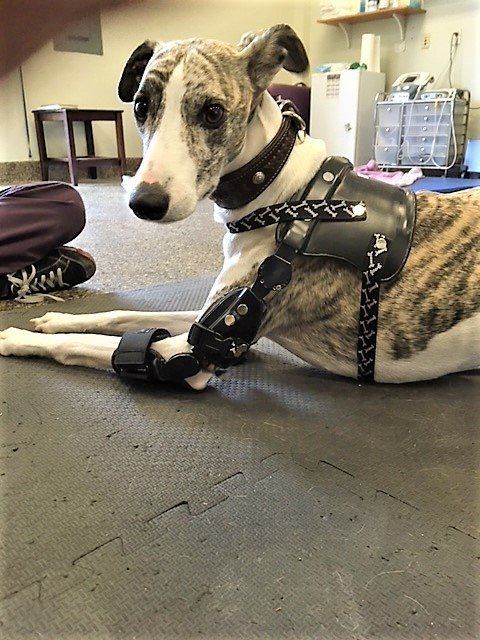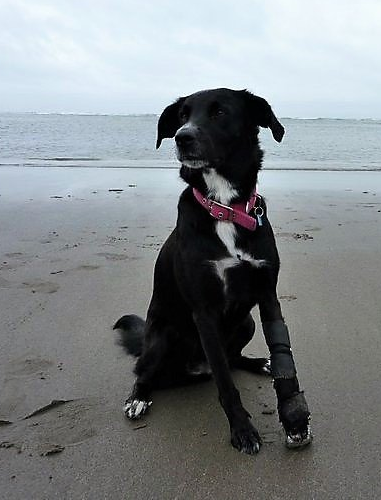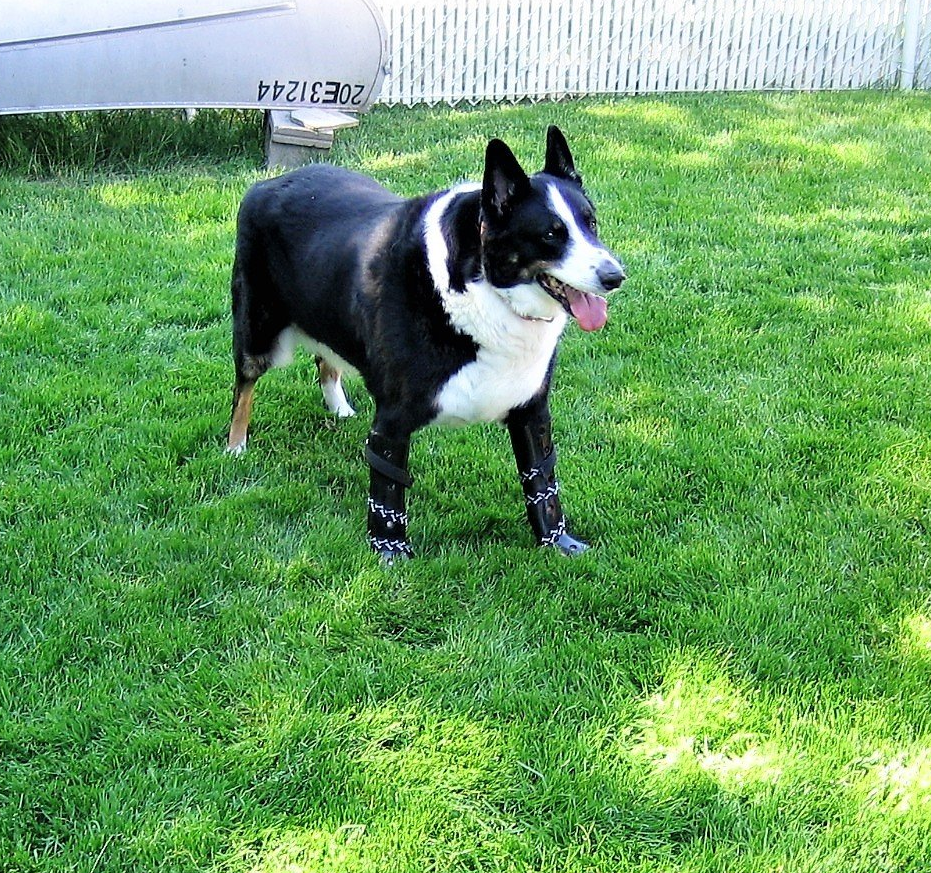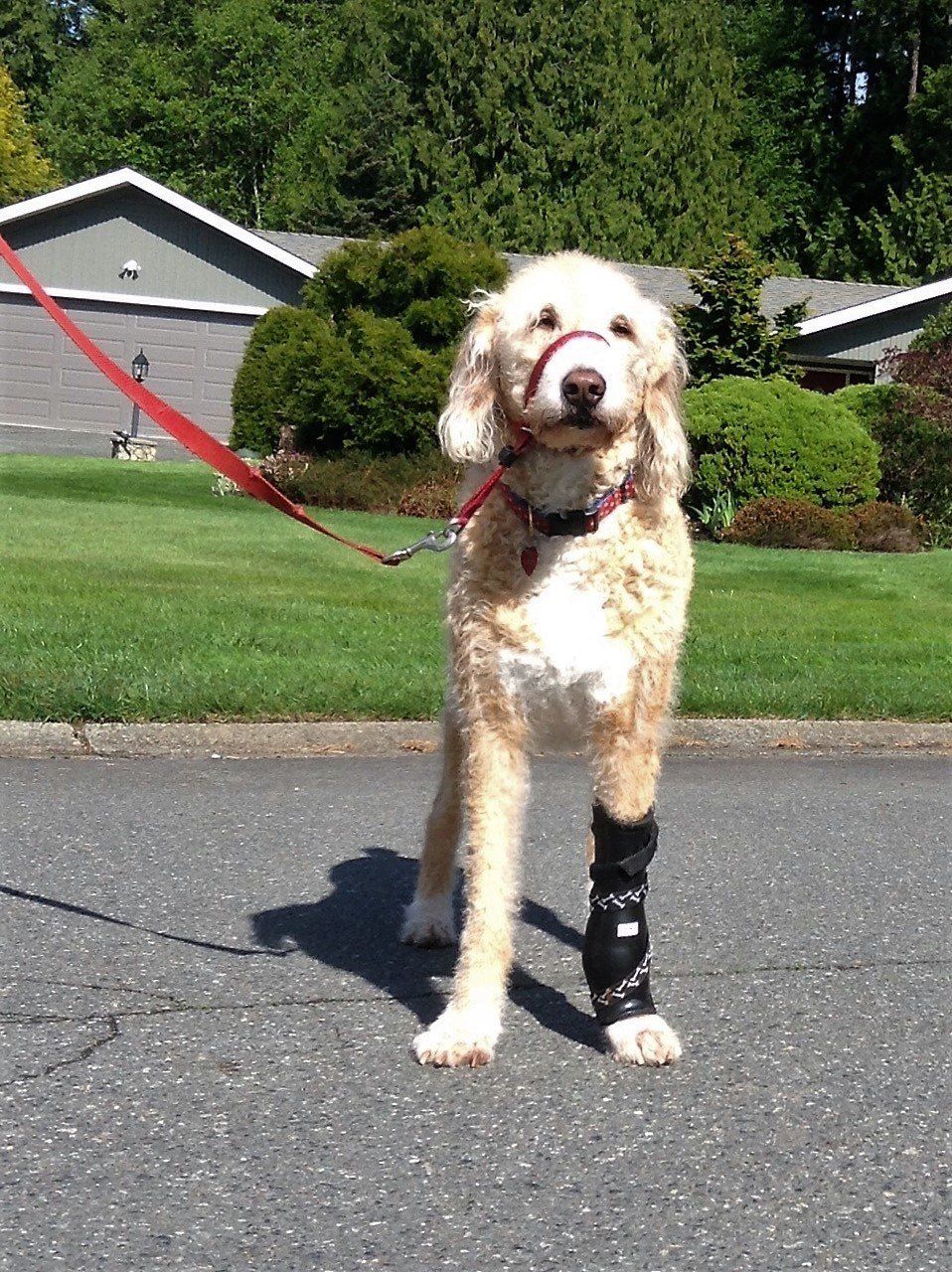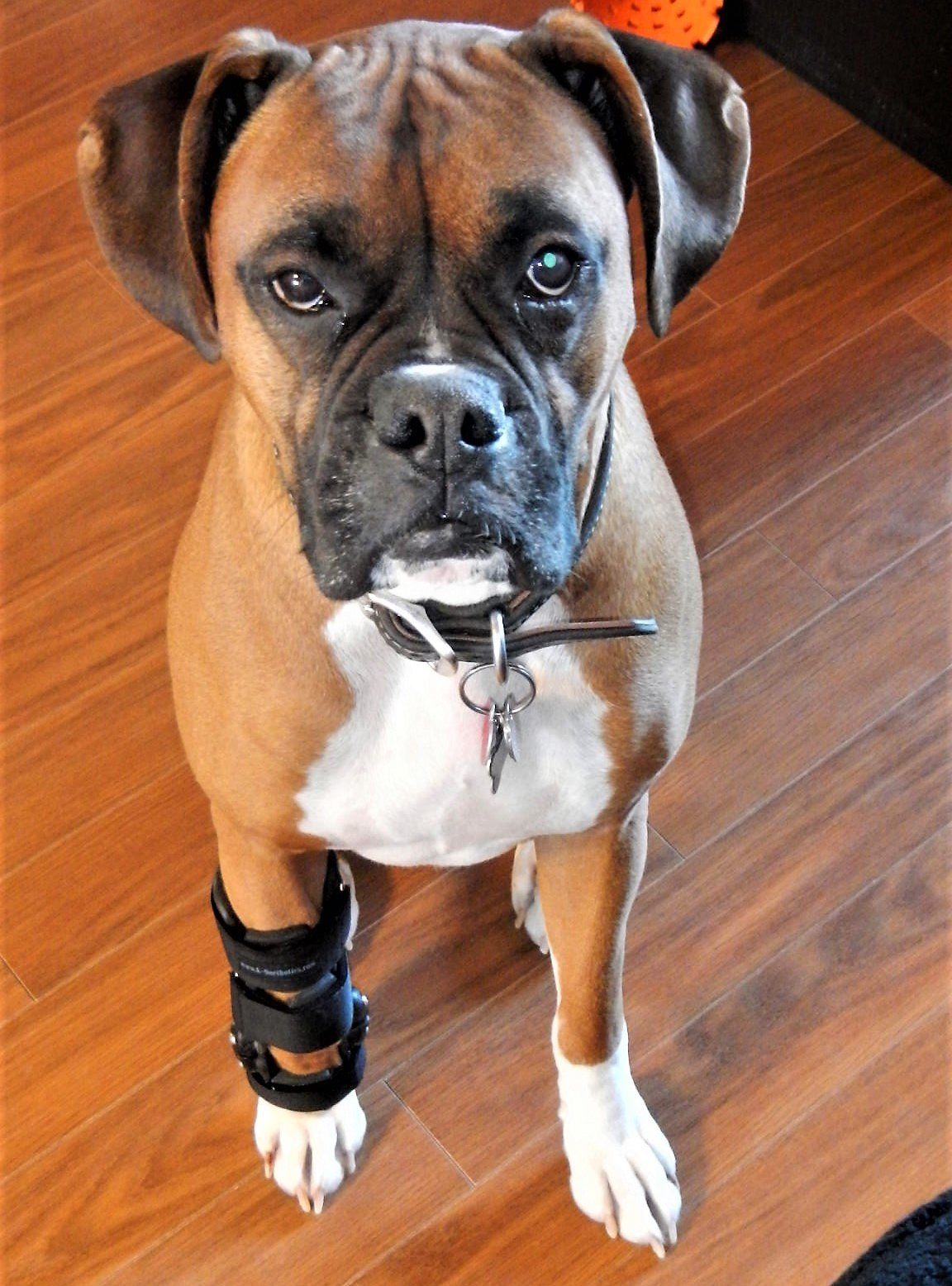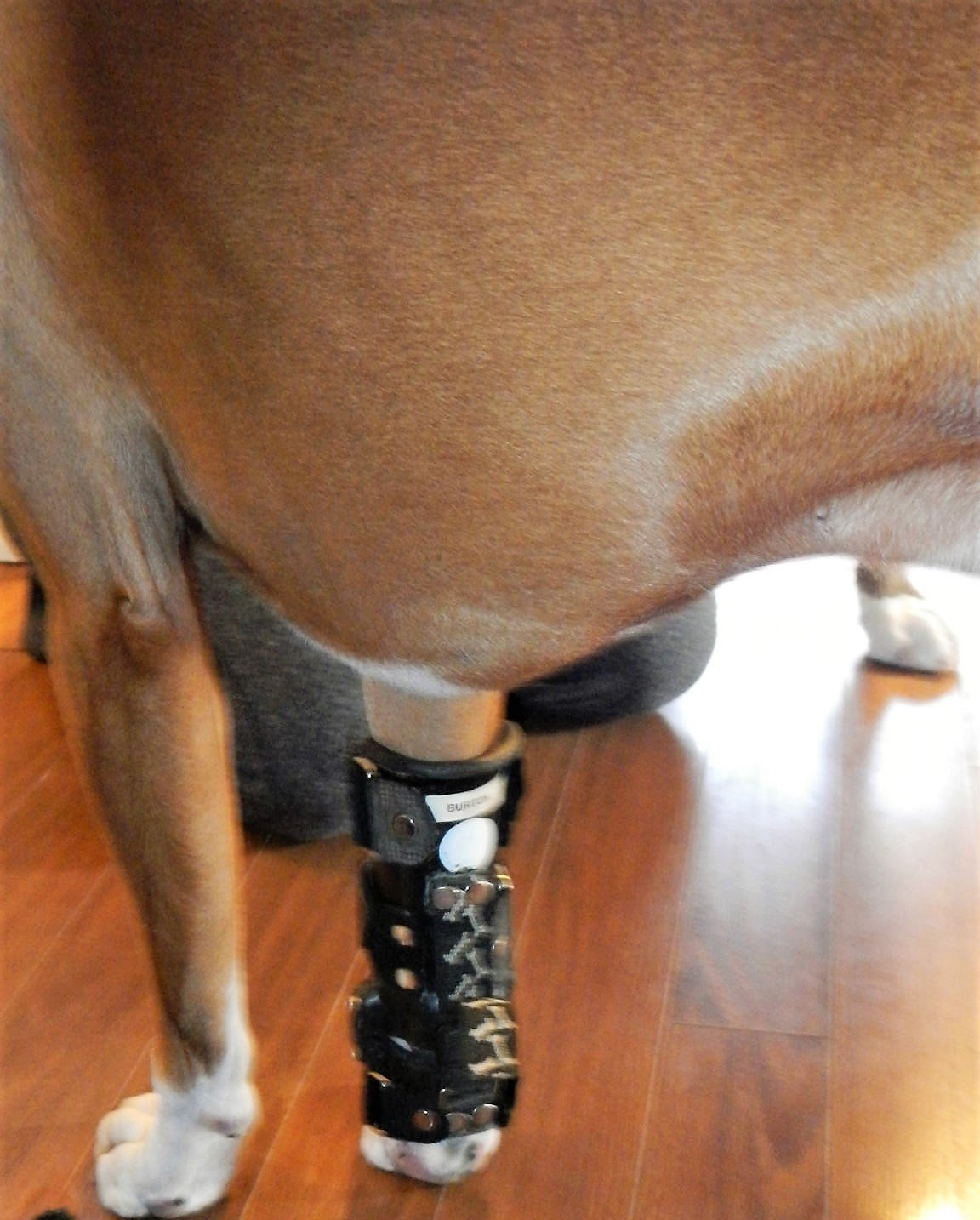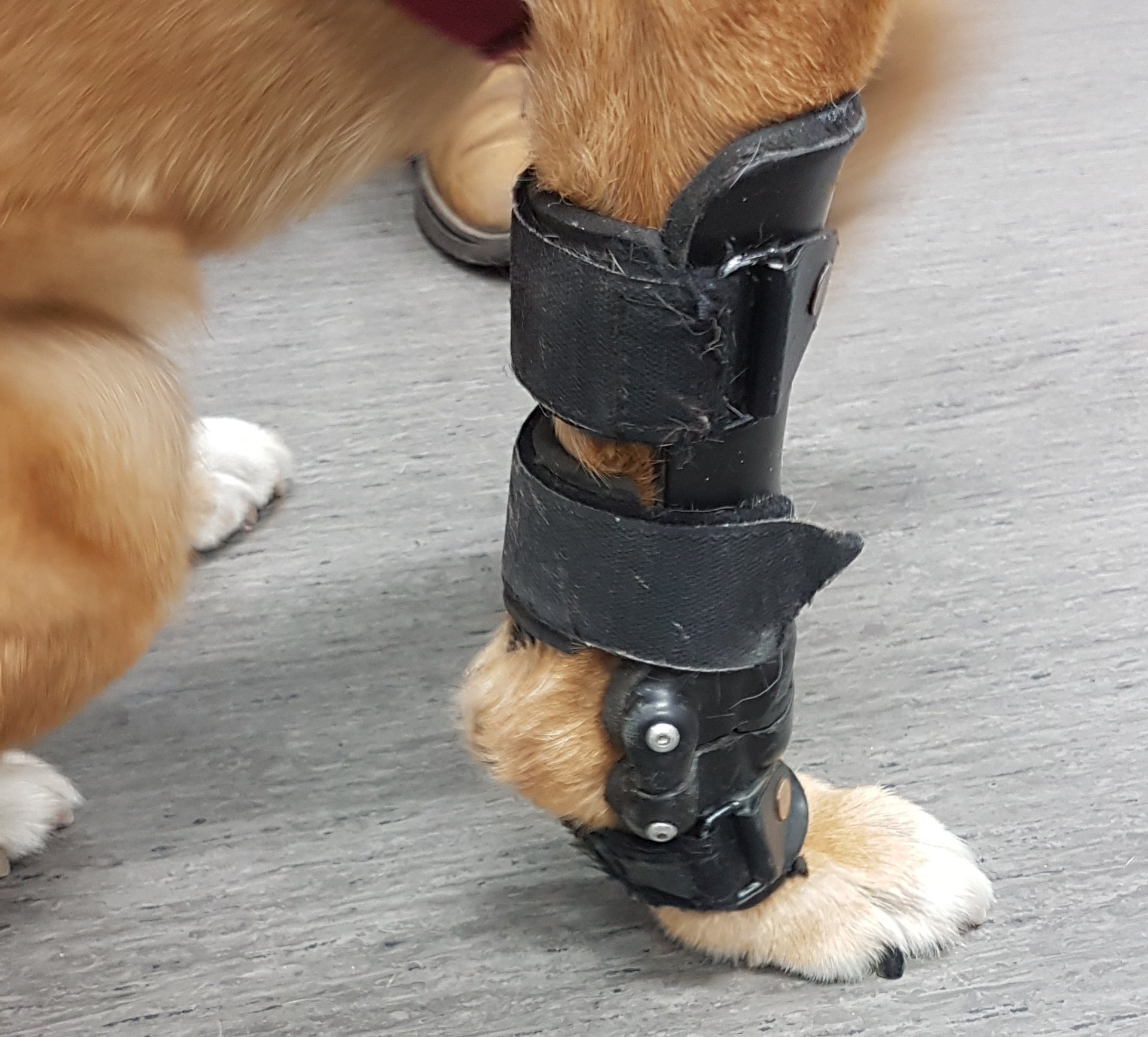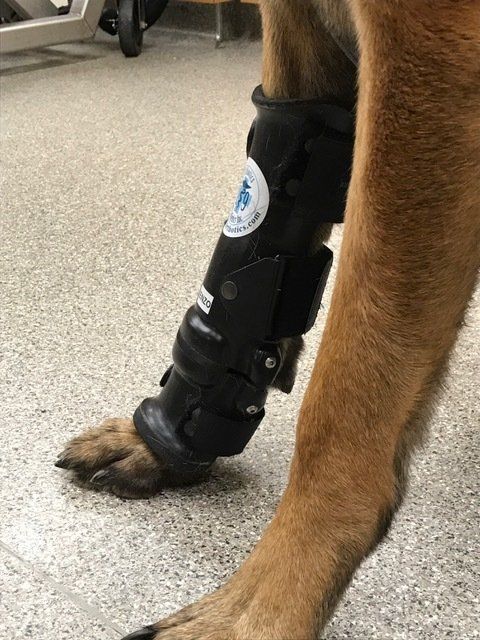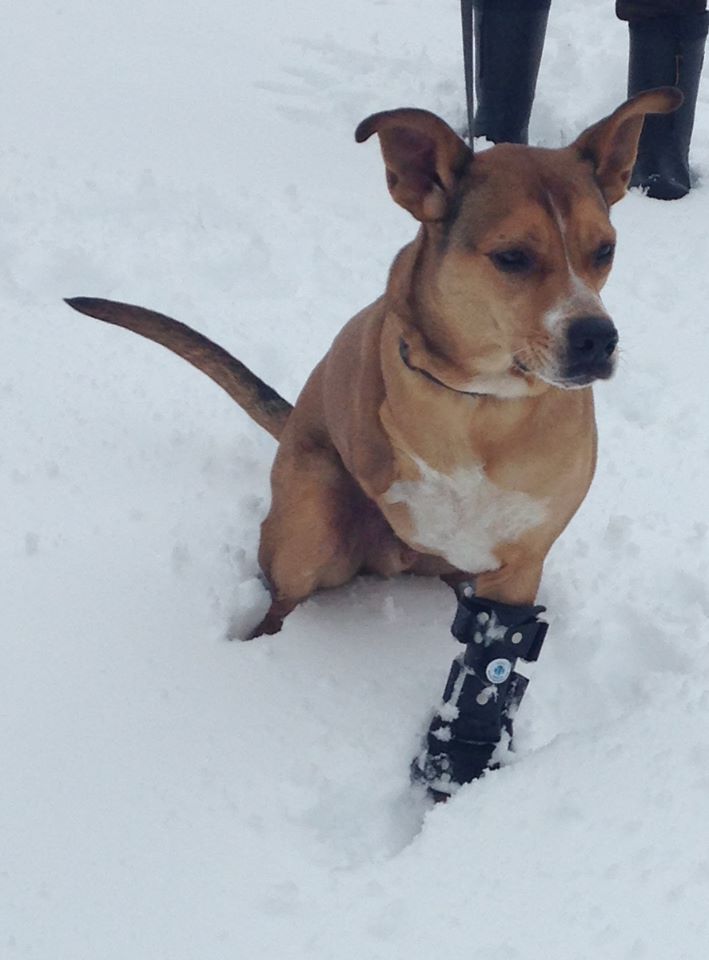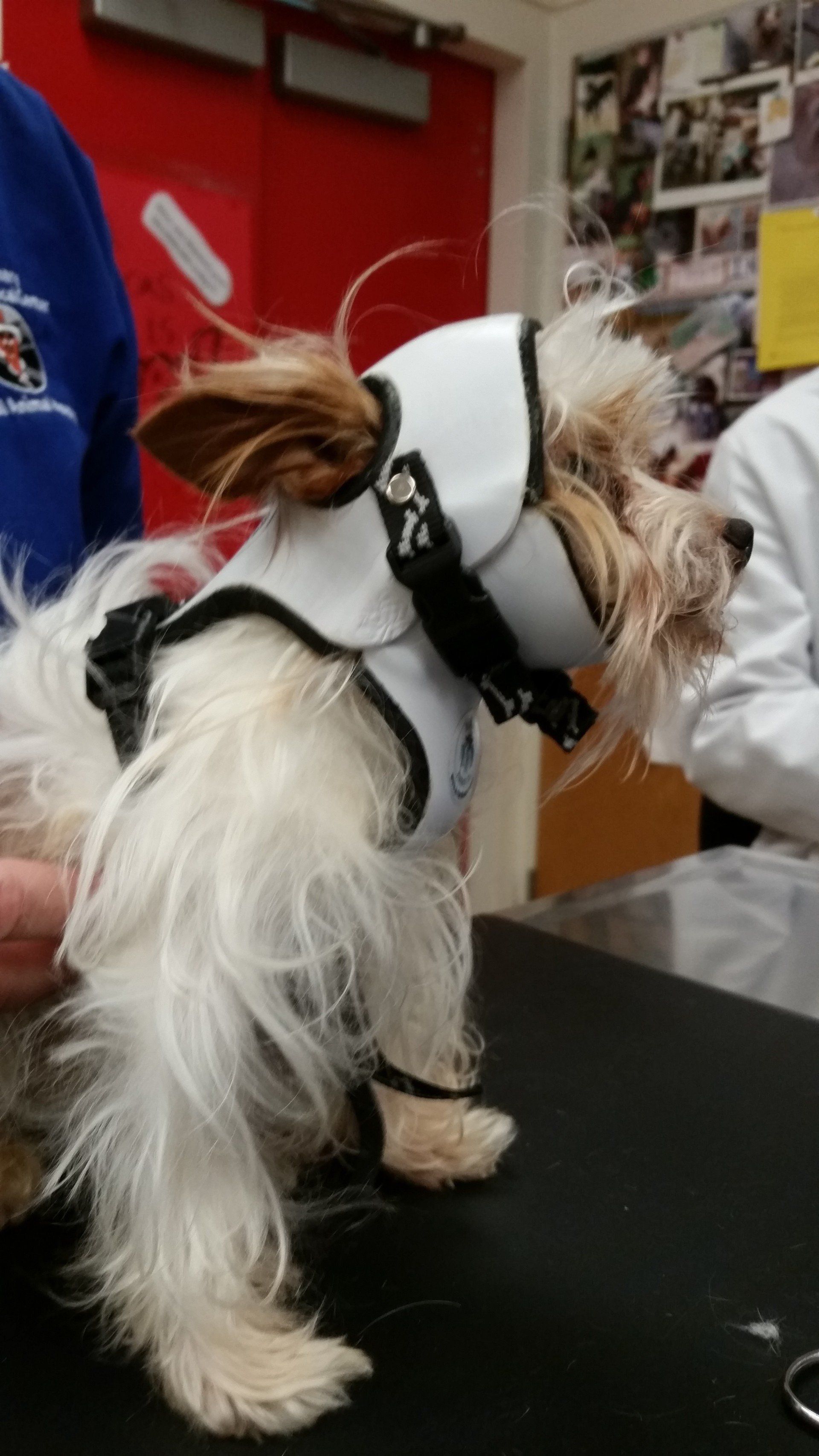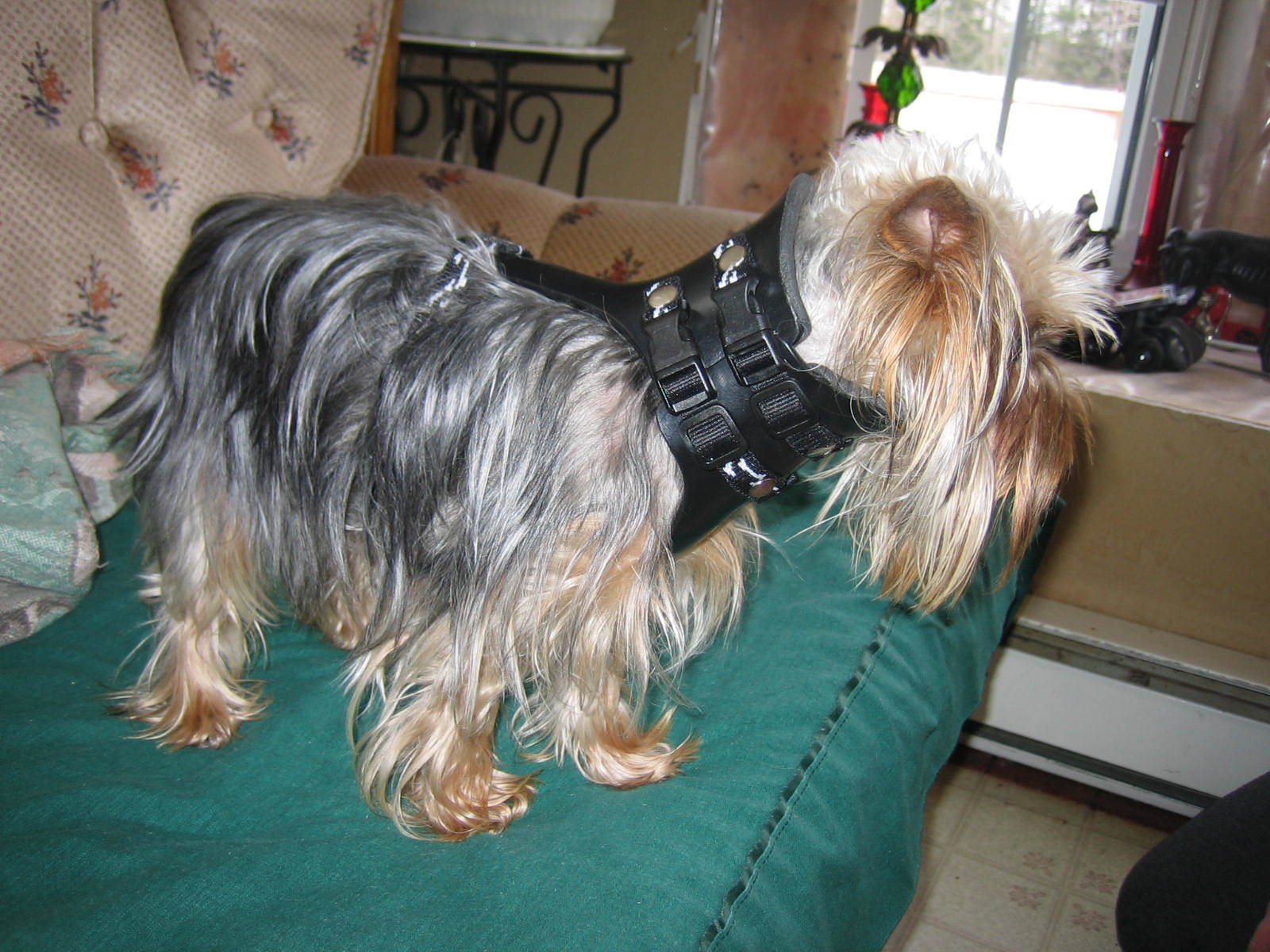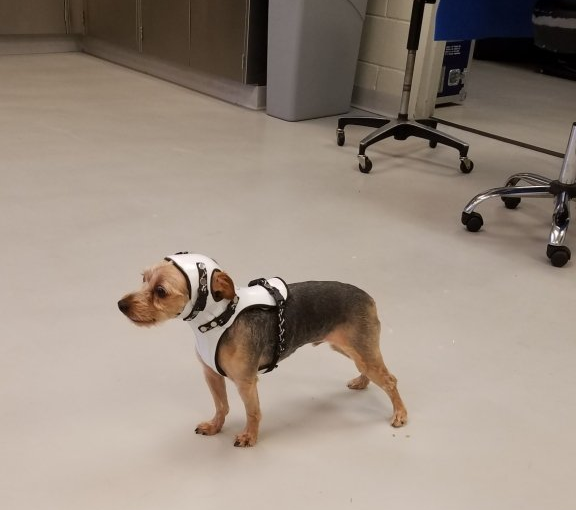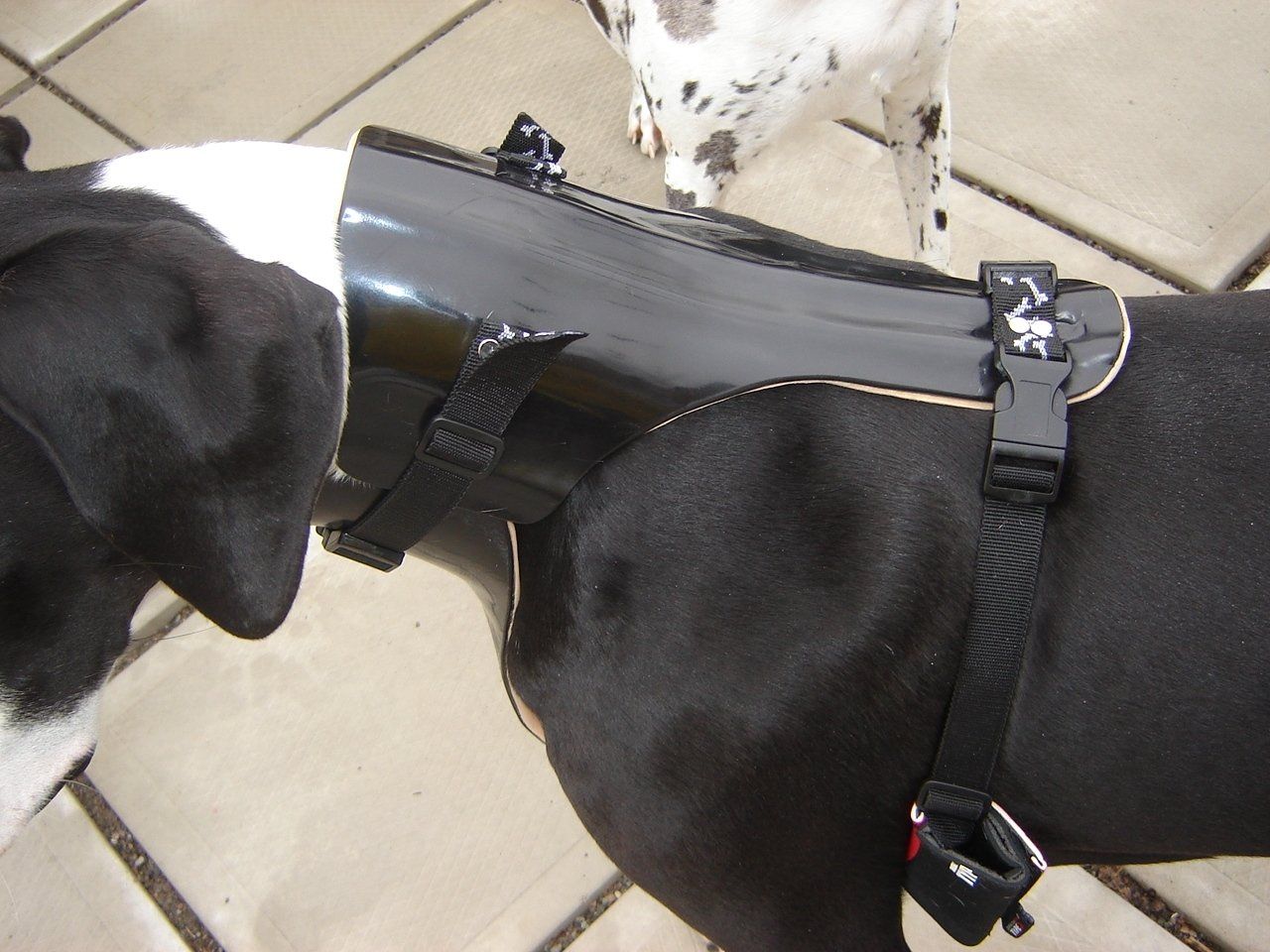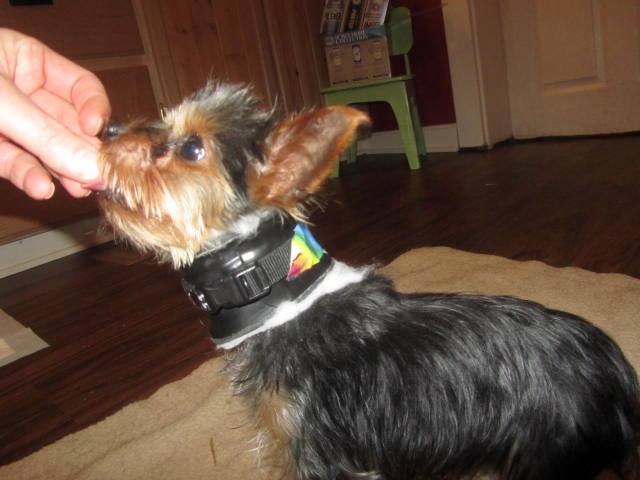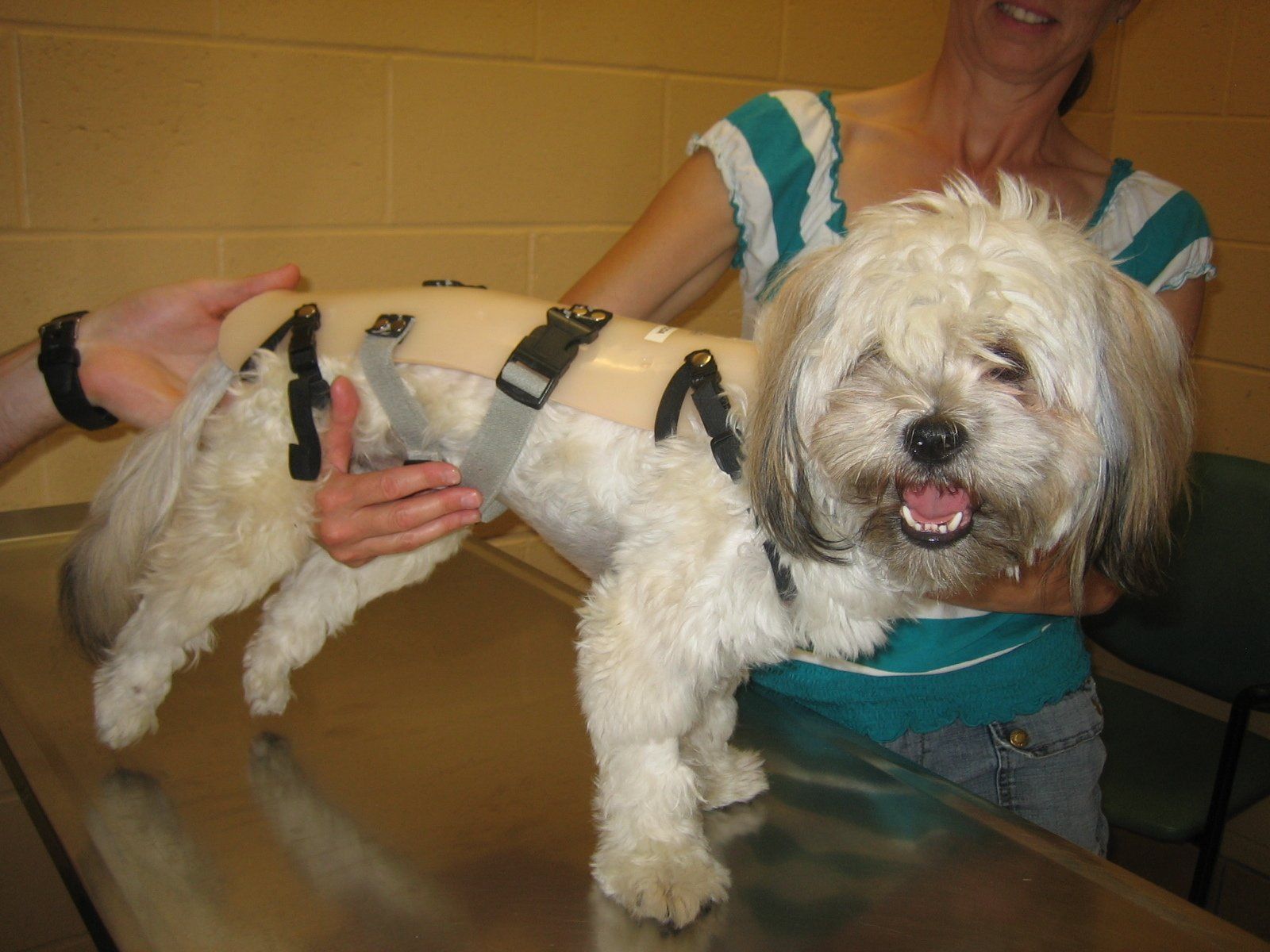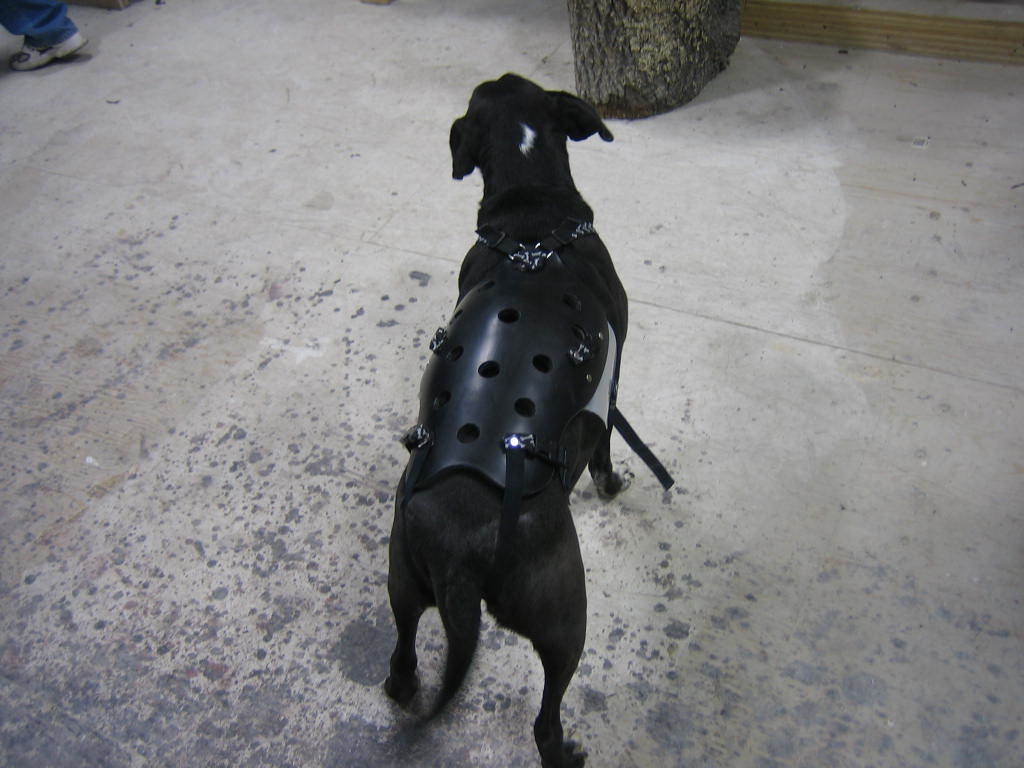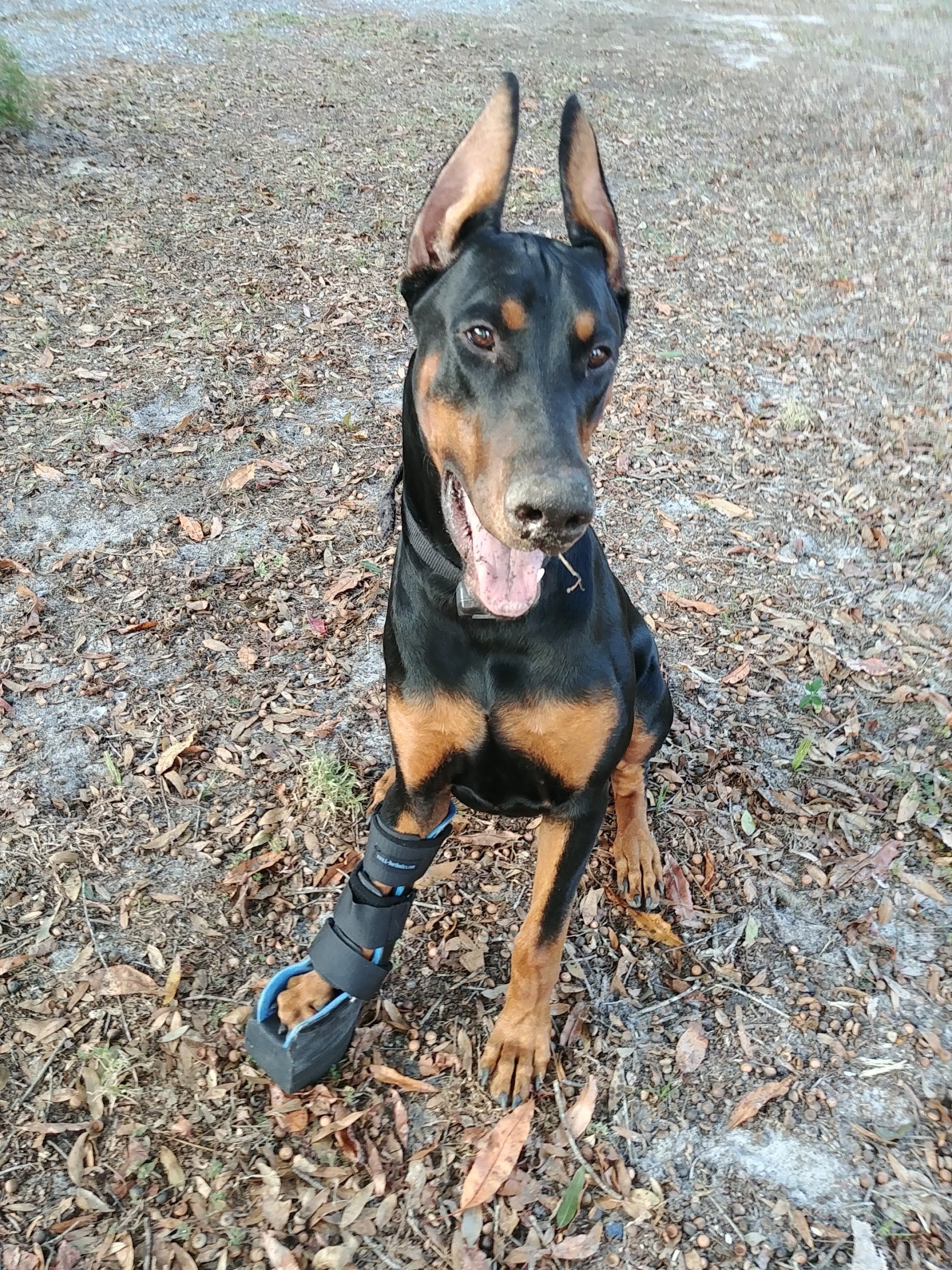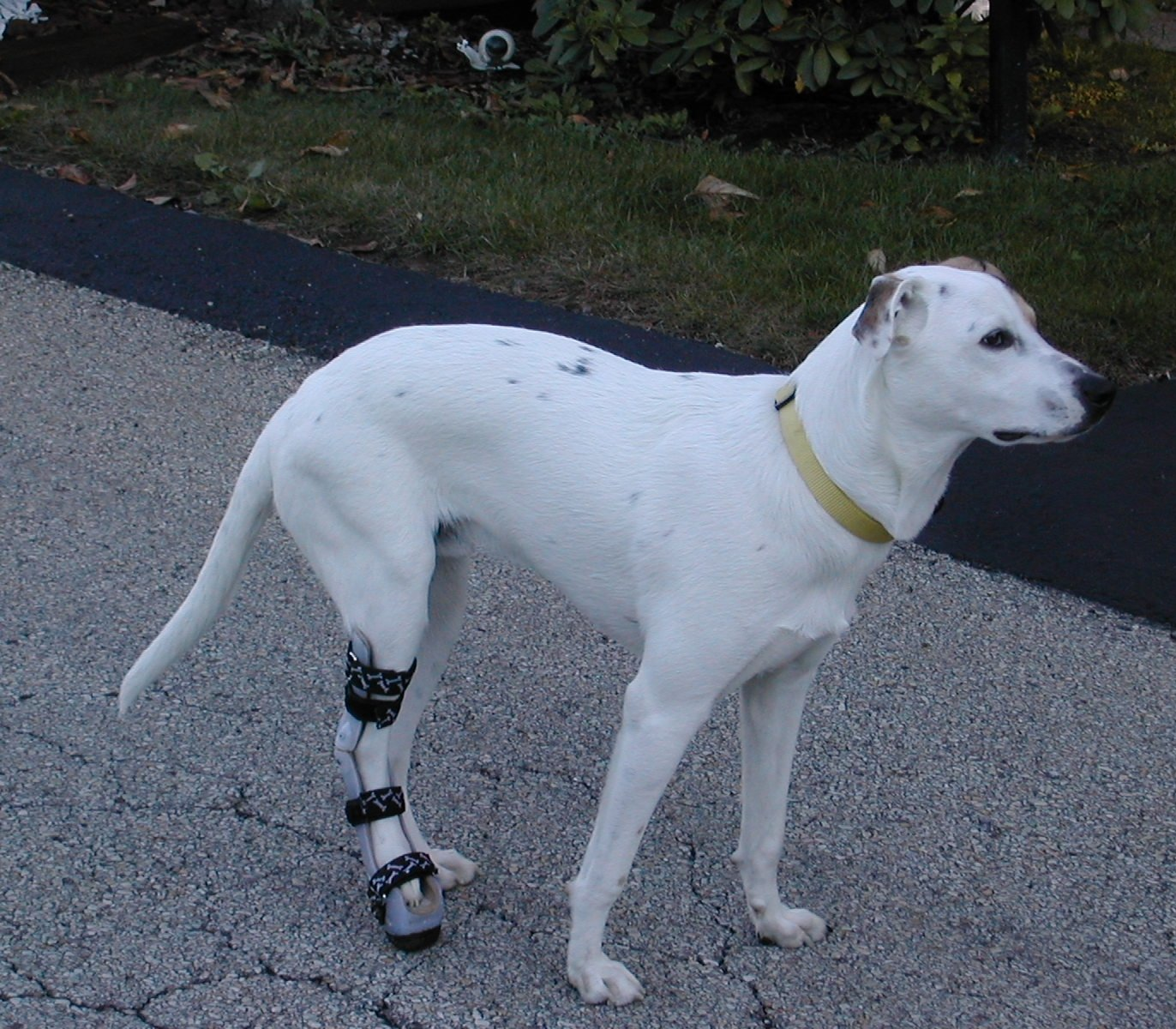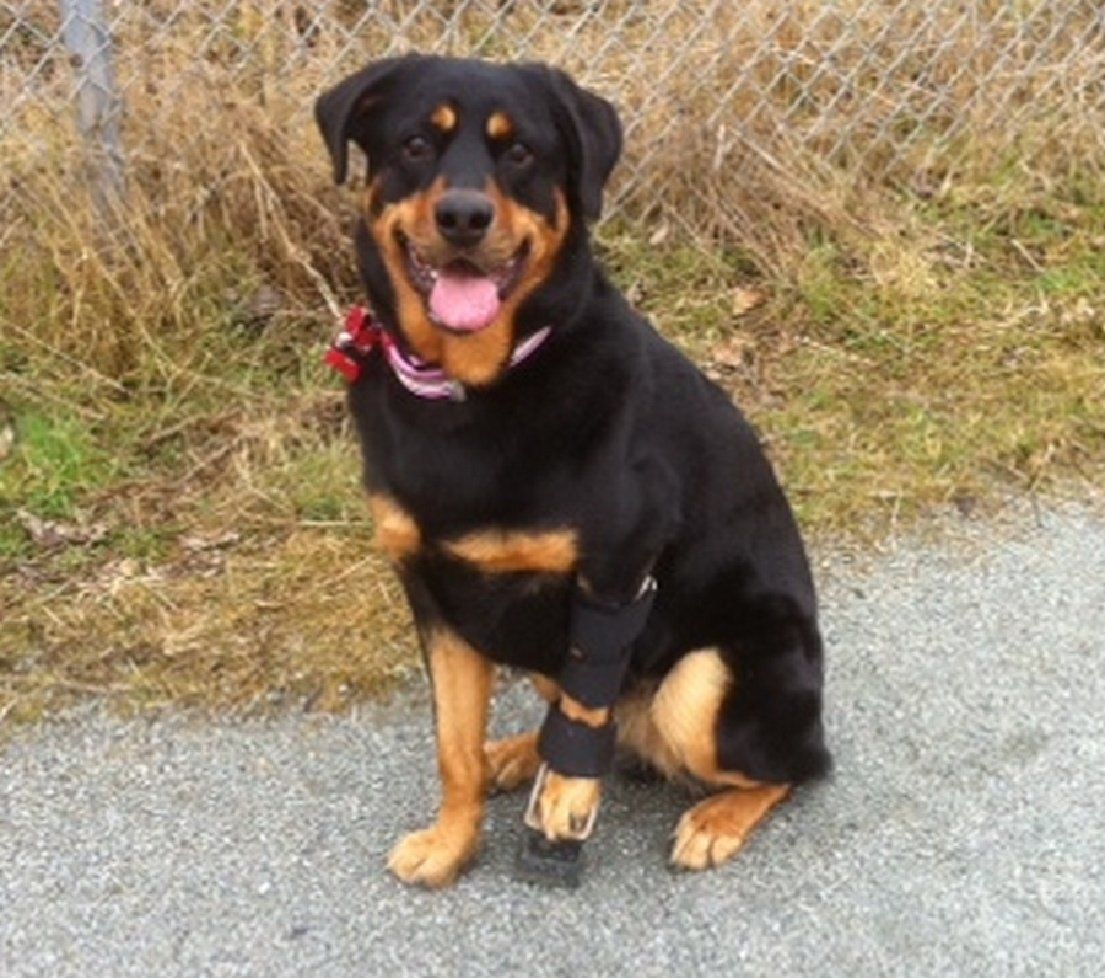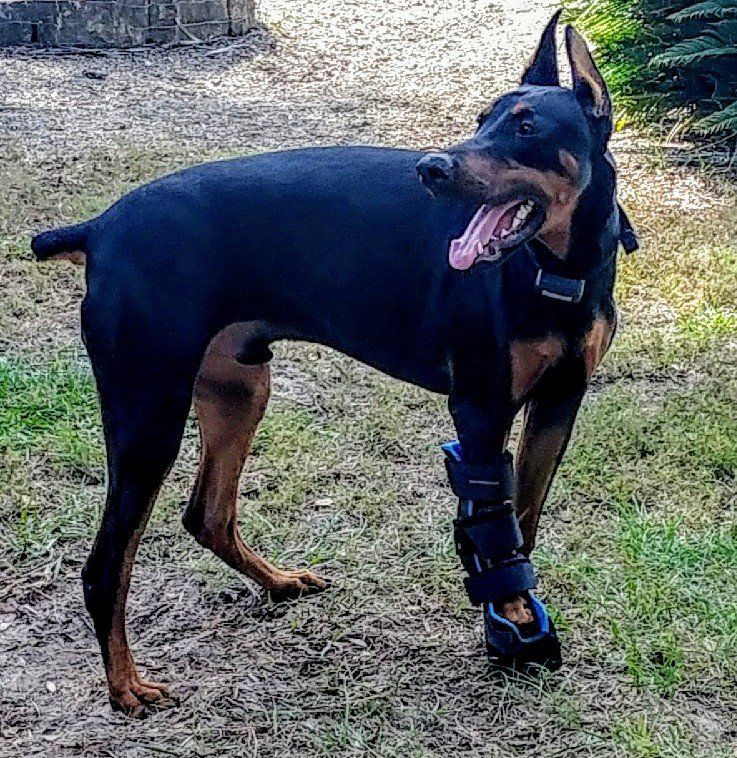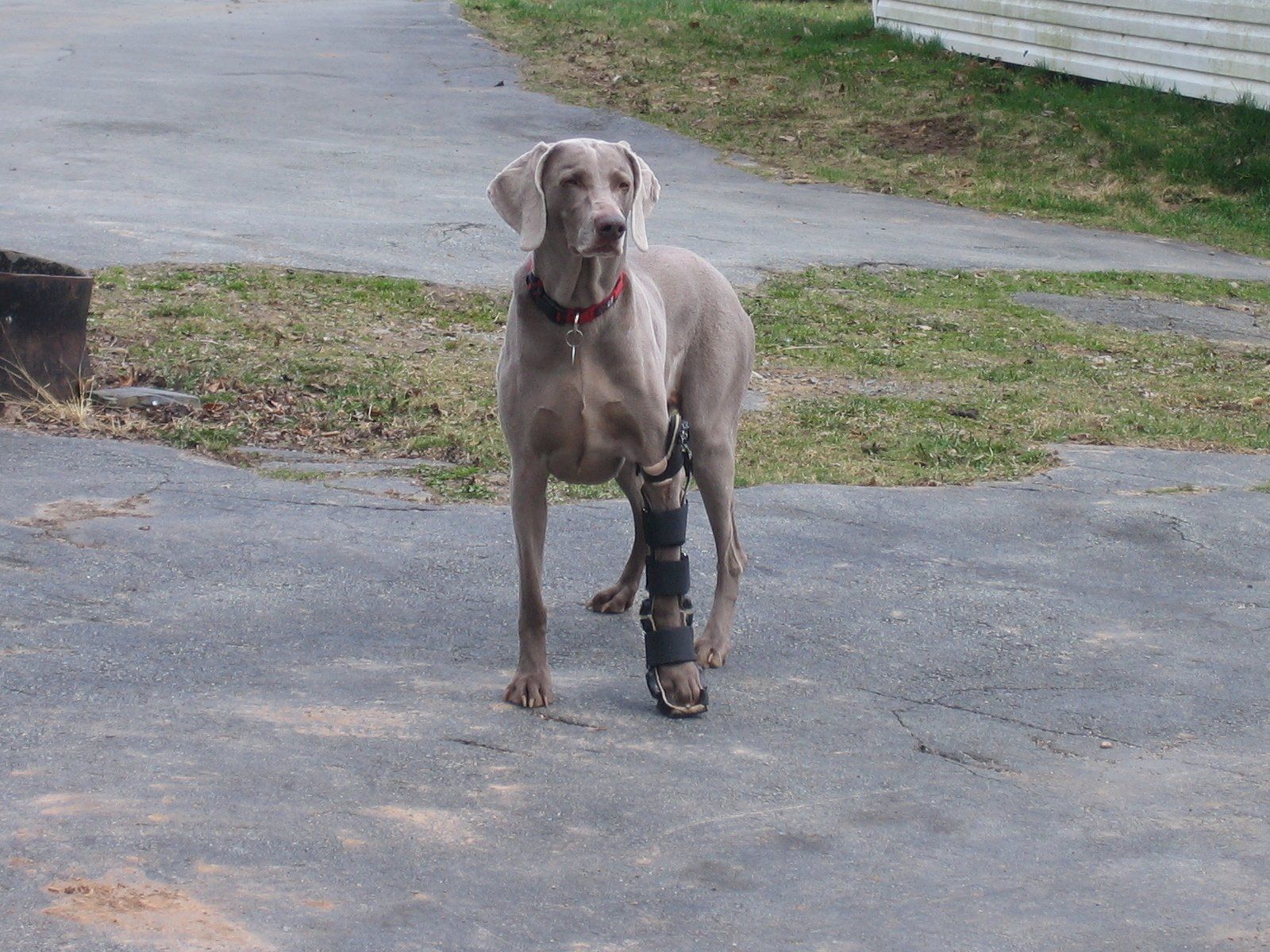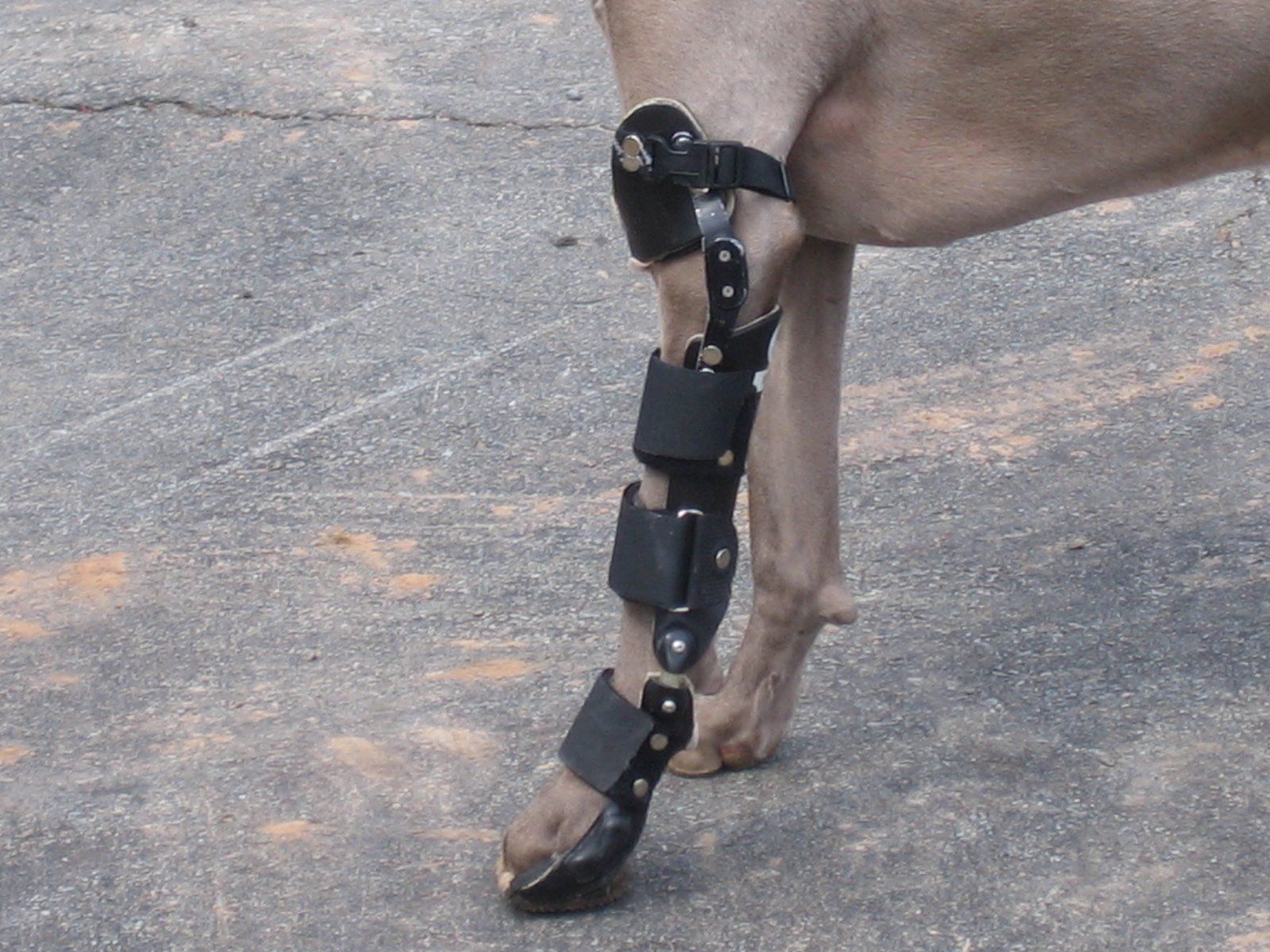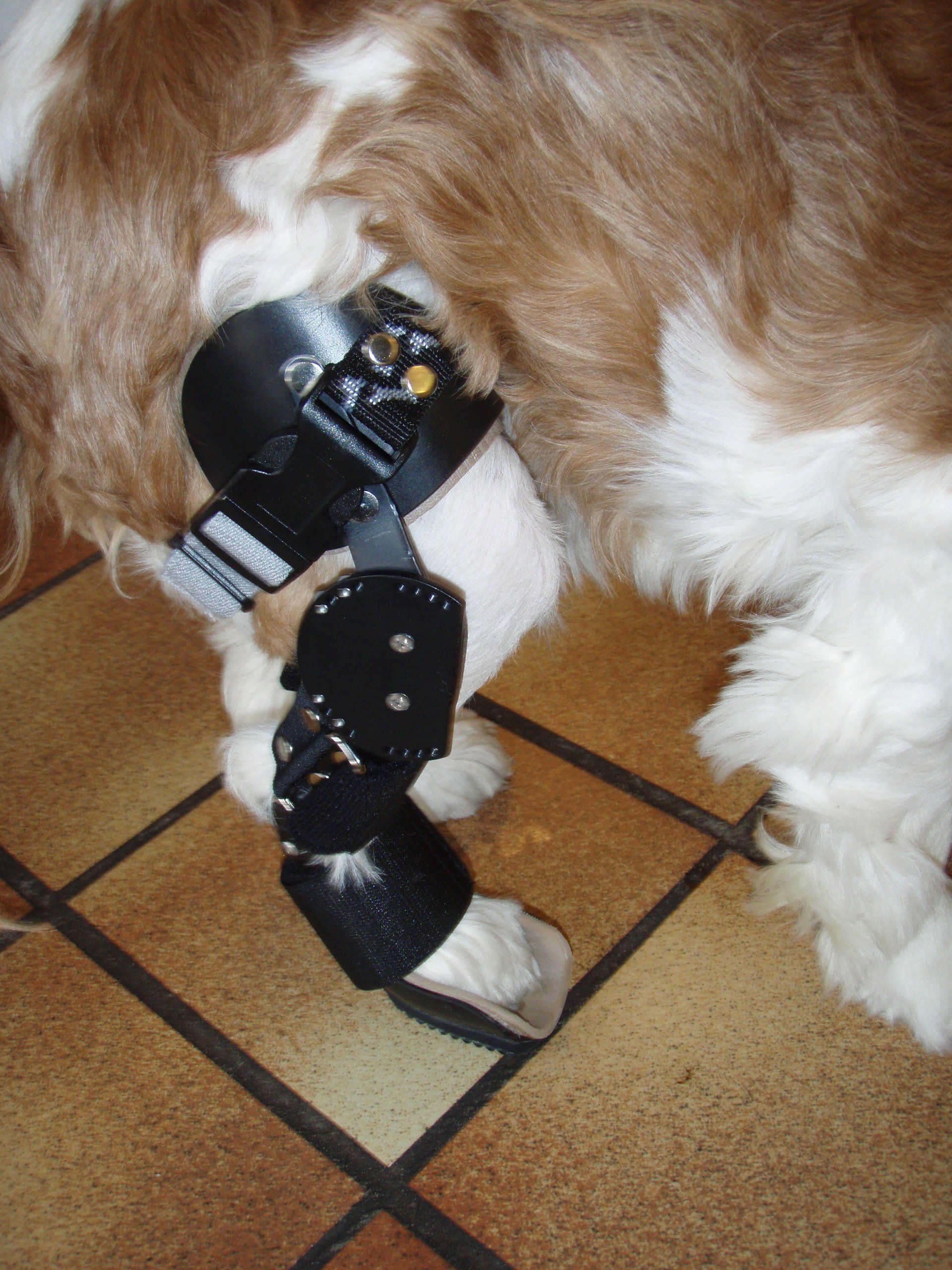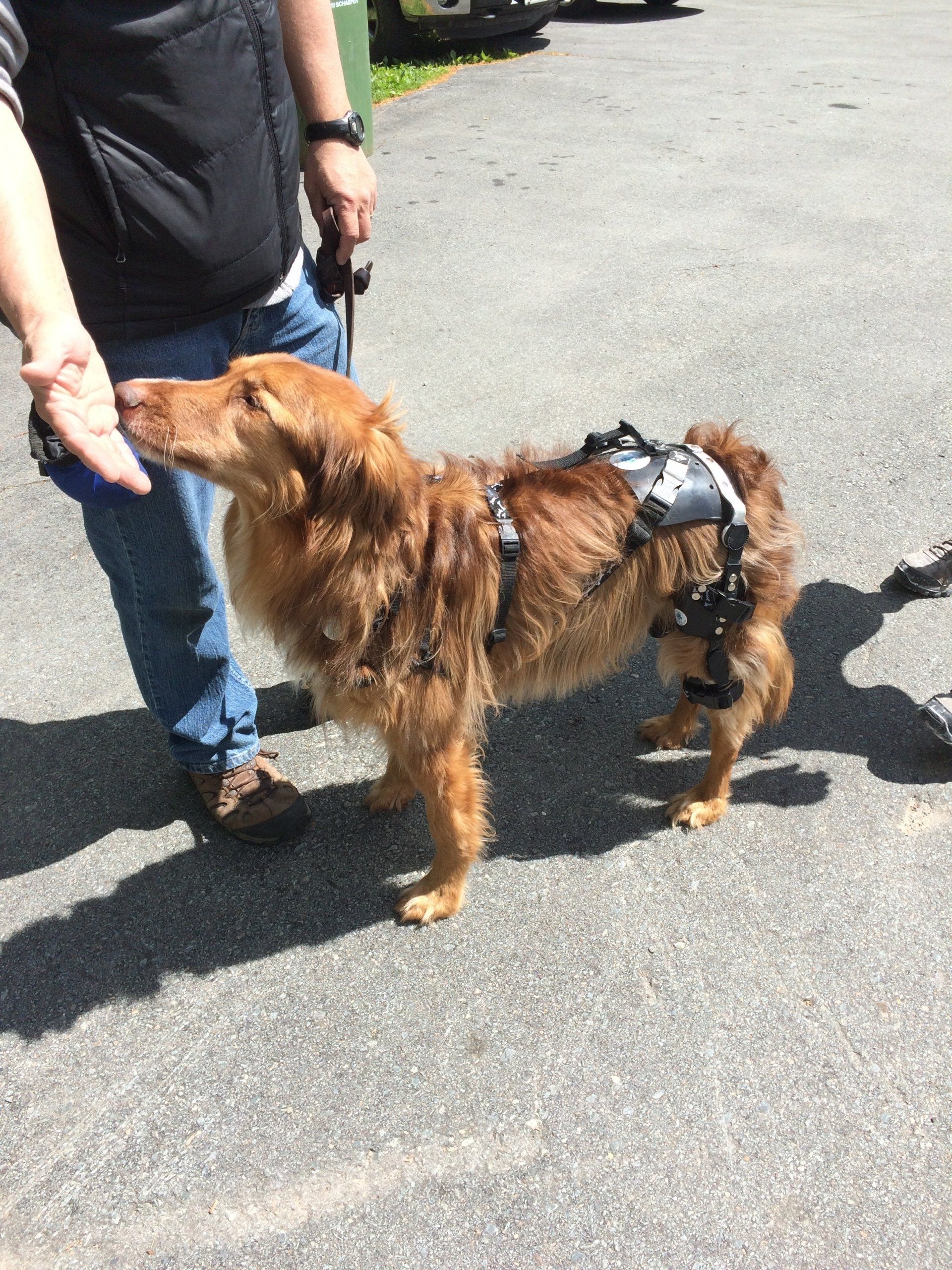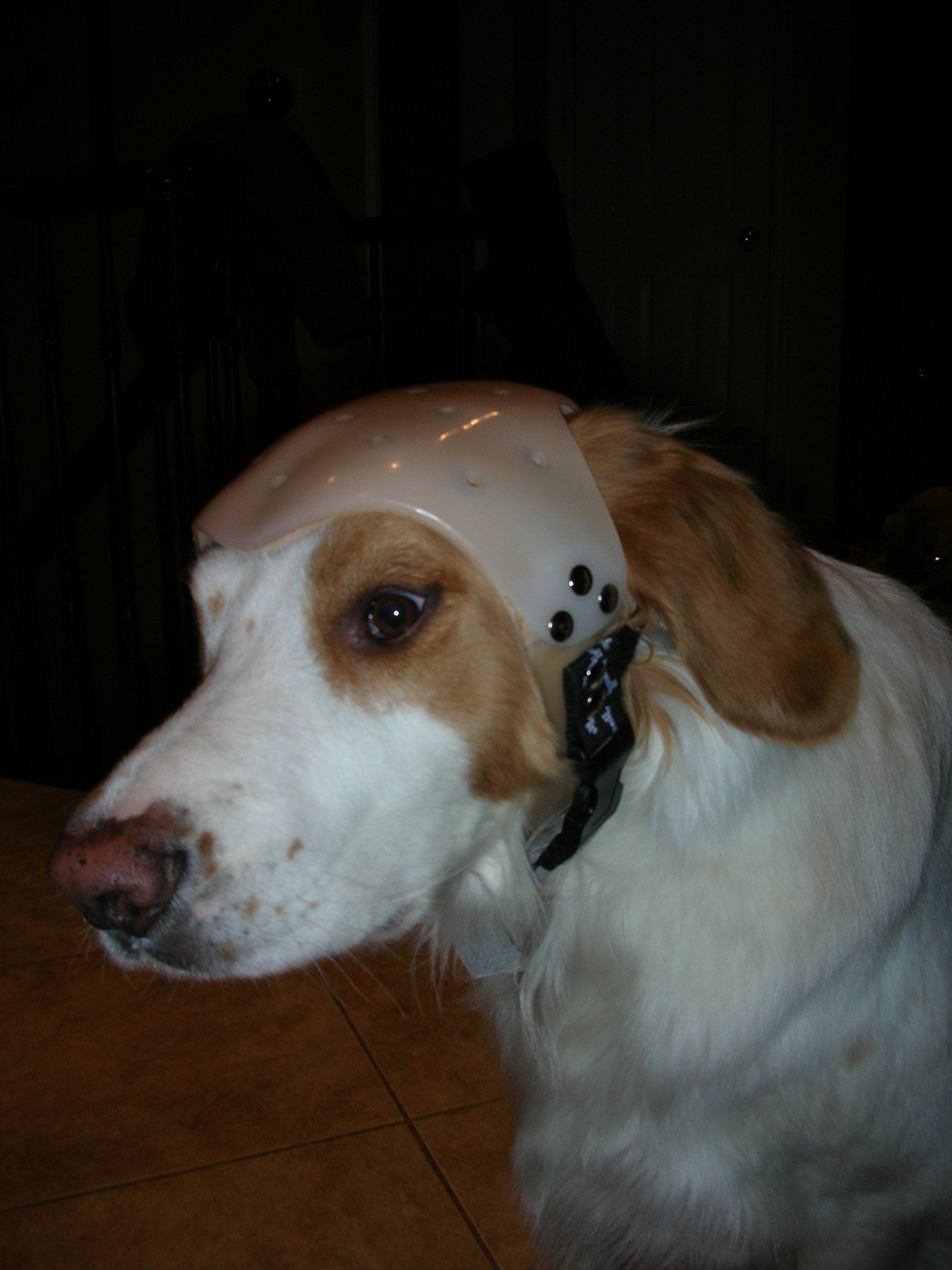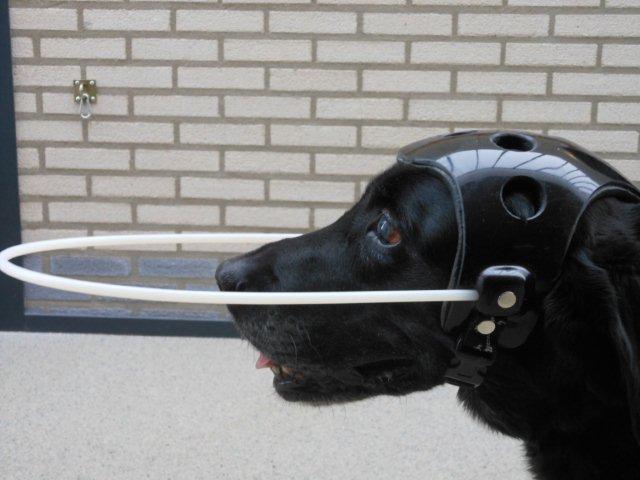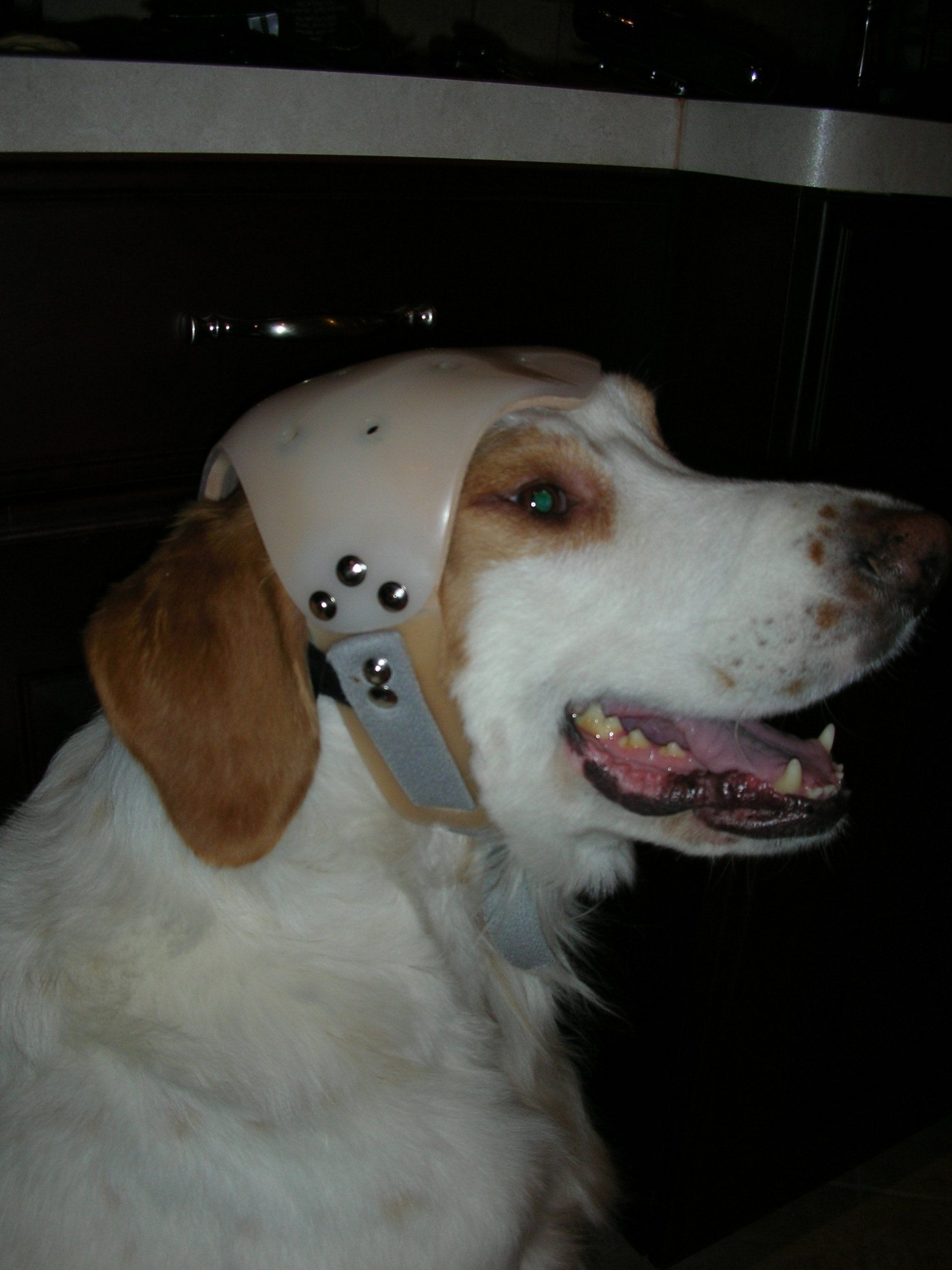Orthotics
Orthotic Features
Orthotic applications are fabricated out of thermoform plastic with thermo foam lining for a comfortable intimate fitting. A biomechanical approach is used when configuring the strapping system to suspend devices. Elastic integration of the strapping system allows for a comfortable fit while maintaining optimal suspension, so as not to impede on the dynamic movement of dogs anatomy. Orthotics are designed for the following three applications:
- Prophylactic
- Rehabilitative
- Functional
Prophylactic
Prophylactic orthotic products are designed to prevent or reduce the severity of joint injury.
Use an orthotic when a dog has a non-functional paw (i.e. knuckling over). The orthotic will support the paw, keeping it in the correct position when weight bearing, and is designed to prevent dorsal sores from developing and other potential trauma to the limb.
Rehabilitative
Rehabilitative orthotics are used to support and stabilize a joint while assisting or restricting range of motion.
Dogs having CCL or cranial cruciate ligament injuries, in particular, benefit from a rehabilitative orthotic device to recover from injury, and often for long term treatment.
Functional
Functional orthotics provides stability for chronically unstable joints and limbs for long term support and function
Dogs with hip dysplasia may benefit from a functional orthosis that provides support while stabilizing the hip joint. The range of motion of the hip joint is controlled to prevent luxation and the paws maintain correct stance position and extension.
Orthotics Product List
Articulating Carpal Rigid Metacarpal
Objective is to fixate the paw in a normal stance position so when walking, the nails, digits and paw do not drag on the ground creating sores. The carpal joint, can have free range of motion during gait cycle while provide rigid support for the paw.. In addition, the orthosis provides a rocker roller design, to orthosis planter aspect to facilitate a smooth gait cycle.
Rigid Tarsal
Helpful for: Rigid external support during post operative or chronic instability treatment
Patients that require a removable orthosis while providing the ideal external support for fractured tarsal joints would benefit from a rigid tarsal orthosis in its recovery treatment. Patients who are geriatric and require long term rigid support would also benefit from the rigid tarsal orthosis.
Articulating Tarsal Orthosis
Helpful for: Physical support and stability of the tarsal joint while allowing range of motion
Objective is to provide physical stability while having ability to control the range of motion at the joint level accordingly. The orthosis is composed of custom formed plastic proximal and distal to the tarsal joint with rubber joints moulded into plastic. The rubber joints are in alignment with the tarsal joint. The plastic mould designs provide physical support and stability to the medial and lateral aspects of the tarsal and paw with a strapping system to prevent orthosis from migrating out of position. Hyperextension and hyperflexion are controllable in this orthotic application.
Tarsal Hyperflexion
Helpful for: Collapsed Tarsal Joint
Objective is to prevent the tarsal joint from collapsing due to instability (pathologically or traumatic). The orthosis is good for long-term use or for post operated treatment. The design of orthosis allows for soft cushion bumper system that prevents hyperflexion from occurring. A biomechanical strapping system prevent the orthosis form migrating out of place when canine is active.
Hyperflexion tarsal orthosis application is a very effective controlled range of motion treatment management plan post operatively after Achilles surgery or for long term support.
Articulating Tarsal and Rigid Metatarsal Orthosis
Helpful for: Paws that knuckle over
Objective is to fixate the paw in a normal stance position so when walking, the nails, digits and paw do not drag on the ground creating sores. The tarsal joint, can have free range of motion during gait cycle while provide rigid support for the paw.. In addition, the orthosis provides a rocker roller design, to orthosis planter aspect to facilitate a smooth gait cycle.
Stifle Orthosis
Helpful for: post-operative and treatment to long-term chronic instability of the stifle joint
Objective with stifle orthosis is to prevent external and internal rotation within the stifle joint, while providing medial and lateral support. Controlling the joint range of motion will assist in preventing ligament tears while the designed form fitting plastic moulds aid in over all leg stability and support.
In order to achieve optimal benefits from a Stifle Orthotic, three factors need to be addressed:
Proper fit
Alignment
Suspension
Proper fit
Alignment
Suspension
The stifle orthotic device must fit intimately so not to allow any movement between the leg and device, to prevent shear forces occurring within the stifle joint.
Alignment of the orthotic joint and anatomical joints are to be aligned appropriate with each other to allow leg and orthotic to function comfortably and efficiently.
Consistently maintaining suspension of the orthotic is necessary to provide proper fitting and alignment of the stifle orthotic. K-9 Orthotics & Prosthetics utilizes a harness system in order to maintain consistent suspension of the orthotic device during the dynamics of the canine movements.
Bilateral Hip Orthosis
Helpful for: Hip Dysplasia, hip instability due to trauma, and post-operative support
Objective with the bilateral hip orthosis is to prevent the hip joints from subluxating (partial dislocation) or luxation (dislocation) while providing over all stability support for the legs. These are key factors in providing increased activity levels and reducing pain and inflammation.
By controlling the range of motion within the hip joint using mechanical joints, the bilateral hip orthosis assists in preventing unstable hip joints from dislocation partially or completely. Having metal supports on each leg and connecting together on the pelvic region provides the legs with stability support. This form of stability will enable the paws and legs to maintain in a good stance position giving better leg movement and control when walking.
The objective is achieved by having custom formed plastic that fits intimately onto the canine body. Incorporated within the custom moulded plastic are mechanical joints. A custom body harness suspends everything into position to maintain fit and alignment during the dynamics of canine movements.
Elbow Orthosis
Helpful for: Instability at the elbow joint
With congenital or chronic instability, issues with an elbow joint can benefit from an external orthosis for support. This stability provides increased comfort and mobility for the canines.
Rigid Carpal Orthosis
Helpful for: External support for arthodesis carpal joints, brachial plexus injuries and other physical aliments
Objective is to provide rigid support for the carpal joint in a natural stance position while having normal weight bearing pressure through the pad on the paw. A rocker roller design is incorporated into the orthotic design so that when the orthotic contacts the ground, the rocker roller design helps facilitate a roll over action for a smoother gait cycle. Rubber gripper provides excellent traction with ground surface.
This kind of external support through a carpal orthosis, allows for the paw and leg to bear weight more comfortably when external forces are applied to an injured leg and paw while preventing secondary problems such as sores from a dragging paw, or from tendon contractures occurring. If contractures are already present, the orthosis can be a modified design to support limb while having the ground reaction forces and pressure to be directed to the pad of the paw.
Articulating Carpal Orthosis
Helpful for: Physical support and stability
Objective is to provide physical stability while having the ability to control the range of motion at the joint level accordingly. The orthosis is composed of custom formed plastic proximal and distal to the carpal joint with a rubber joints moulded into the plastic. The plastic mould design provides physical support and stability to the medial and lateral aspects of the carpal and paw with a strapping system to prevent the orthosis from migrating out of position.
Carpal Hyperextension
Helpful for: Collapsed Carpal Joint
Objective is to prevent the carpal joint from collapsing due to instability (pathologically or traumatic). The orthosis is good for long-term use or for post-operative treatment. The design of orthosis allows for soft cushion bumper system that prevents hyperextension from occurring. A biomechanical strapping system prevents the orthosis form migrating out of place when the canine is active.
Cervical Orthosis
Helpful for: Wobbler's disease or other debilitating neck injuries
Objective is to provide physical support for the neck and head. This is achieved through a rigid bivalve orthosis design. Postoperative treatment with a cervical orthosis gives more assurance for a comfortable and safer recovery time, especially for the larger canines. Canines recovering from wobblers and are experiencing weak muscles that allow a bobbing motion of the head and neck, which in turn can create more stress on the incision site, would benefit from a cervical orthosis to support and control head and neck movement.The orthosis is accommodating for long-term chronic use for those who are not able to have surgery.
Spinal Orthosis
Helpful for: Operative and treatment to long-term chronic instability support for spinal column
Objective is to support and maintain vertebra alignment while providing necessary range of motion restrictions. A spinal orthosis can help with the spinal column surgery post operatively or to provide long-term support for a degenerating spinal column. Incision site or other sensitive areas on the spinal column requiring no physical contact or have bulky bandage dressing, are issues that the custom spinal orthosis can address in its technical design and fit.
Leg Lengthening Discrepancy Orthosis
Helpful for: Legs that are of unequal lengths
Canines that experience leg fracture at the growth plate level in their early developing years, resulting in a stunted growth of the bone and leaving the canine with an altered gait cycle and an improper spinal column and hip alignment. The leg lengthening discrepancy orthosis would benefit the canine by providing a normal leg length for a natural gait cycle, levelling off the hip and allowing the spinal column to be more anatomically correct to prevent any scoliosis curvatures occurring. The orthosis encapsulates the complete leg distal to stifle joint and incorporates a rubber joint at the tarsal joint for a normal articulation while fixating the paw in stance position for stability. The design concept provides a longer biomechanical lever arm of support to the leg, distal to the stifle joint for maximum support when increasing the length of a leg.
Combination of Multiple Joint Level Orthosis
Helpful for: Post operative rehabilitation treatment
Sustaining injuries that affect more than one joint level do have orthotic technical and clinical options available. A stifle and tarsal combination orthosis can provide external support to stabilize the leg while being able to allow tension through elastic assistance to give extension assistance at the stifle joint while facilitating assistance at the tarsal joint, thus providing flexion assistance.
A hip and stifle orthosis can assist with external support and stability while maintaining the joints in proper anatomical alignment with one another during recovery time or for long term support for chronic injury.
Patients that sustained multiple injuries affecting the stifle tarsal and paw can be helped with a full leg orthosis, this will allow easy removal of supportive orthosis for regular evaluation, as well, the orthosis can be accommodating during each phase of the recovery by providing limited range of motion at the joint levels.
Cranial Helmet
Helpful for: Post operative rehabilitation treatment
Objective is to provide a hard protective shell for head injuries from trauma or post-operative treatment applications. Soft foam lining acts as an interface between the protective plastic shell and the head. Soft strapping system under head and jaw provides excellent suspension of the cranial helmet.
Location
Contact info
K-9 Orthotics and Prosthetics
2616 Beaver Bank Rd. Beaver BankNova Scotia B4G 1E6 Canada
All Devices are by Medical Referral and are not Refundable
©
Copyright
K-9 Orthotics & Prosthetics Inc.
